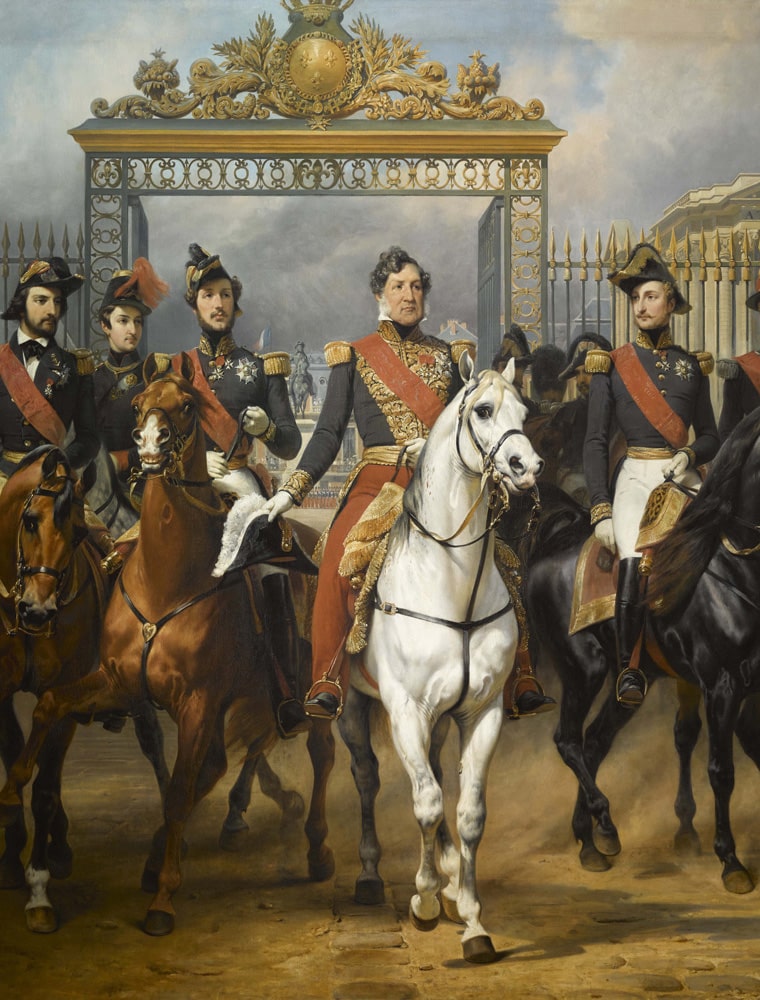2024
The year of the horse
As an iconic French heritage site of international renown, the Palace of Versailles has been chosen to host the equestrian events of the Olympic Games 2024. This major chapter in the long history of the Palace underlines its already very close relationship with the world of horses.
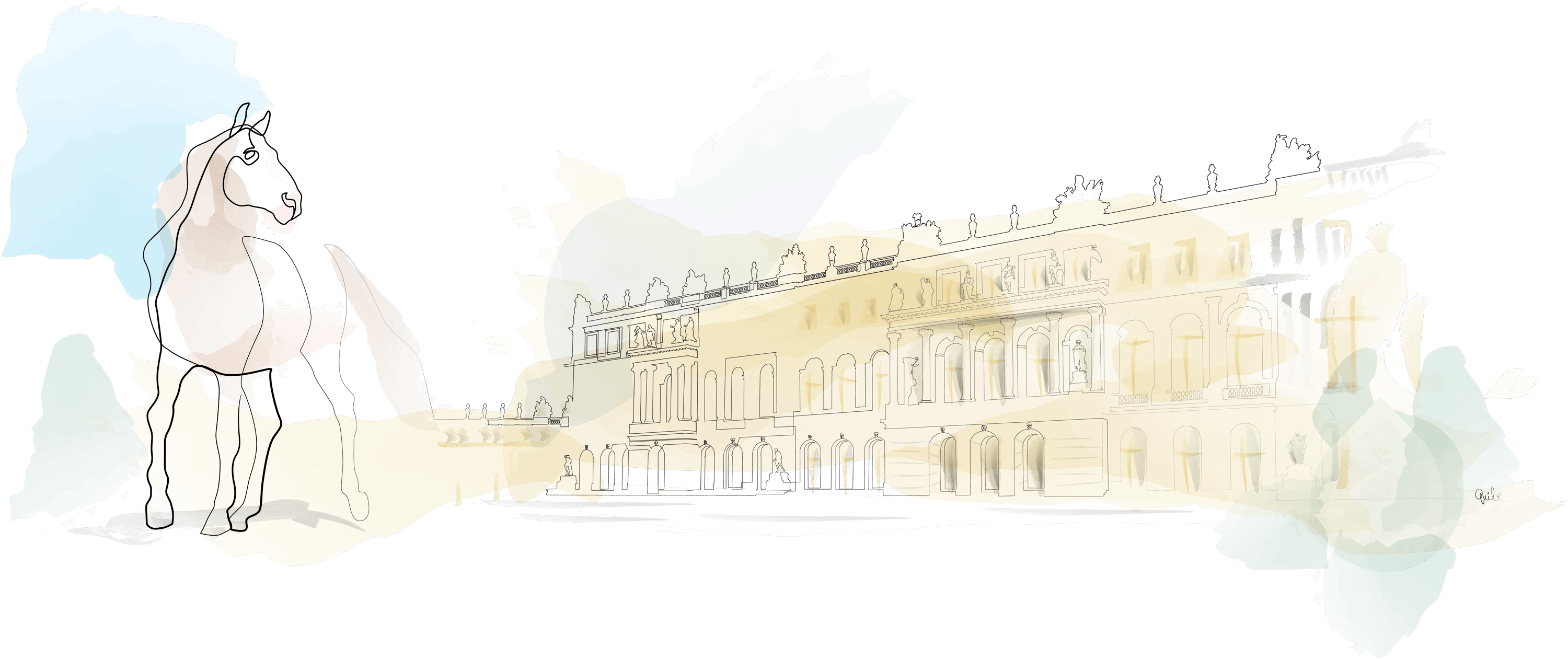
 Versailles, or the art of riding
Versailles, or the art of riding
 Versailles, an Olympic Games 2024 venue
Versailles, an Olympic Games 2024 venue
 An exhibition devoted to horses
An exhibition devoted to horses
Versailles, or the art of riding
Although equestrian sports and dressage existed in ancient Greece, the art of riding found its full expression during the Renaissance, with the appearance of the first riding academies in Italy, and then in France in the late 16th century. Riding was taught systematically, in the same way as dancing, fencing and the humanities; its theory was studied in these schools, where a very light, precise and elegant technique was developed. From a very young age, sovereigns received instruction delivered by the best riding masters, as excellence in horsemanship was thought to symbolize their ability to govern well. This idea was reinforced in art and literature, and the concept of the horseman-king became a facet of the royal identity. In a similar vein, some queens were depicted riding their faithful steeds.
Equestrian portraits
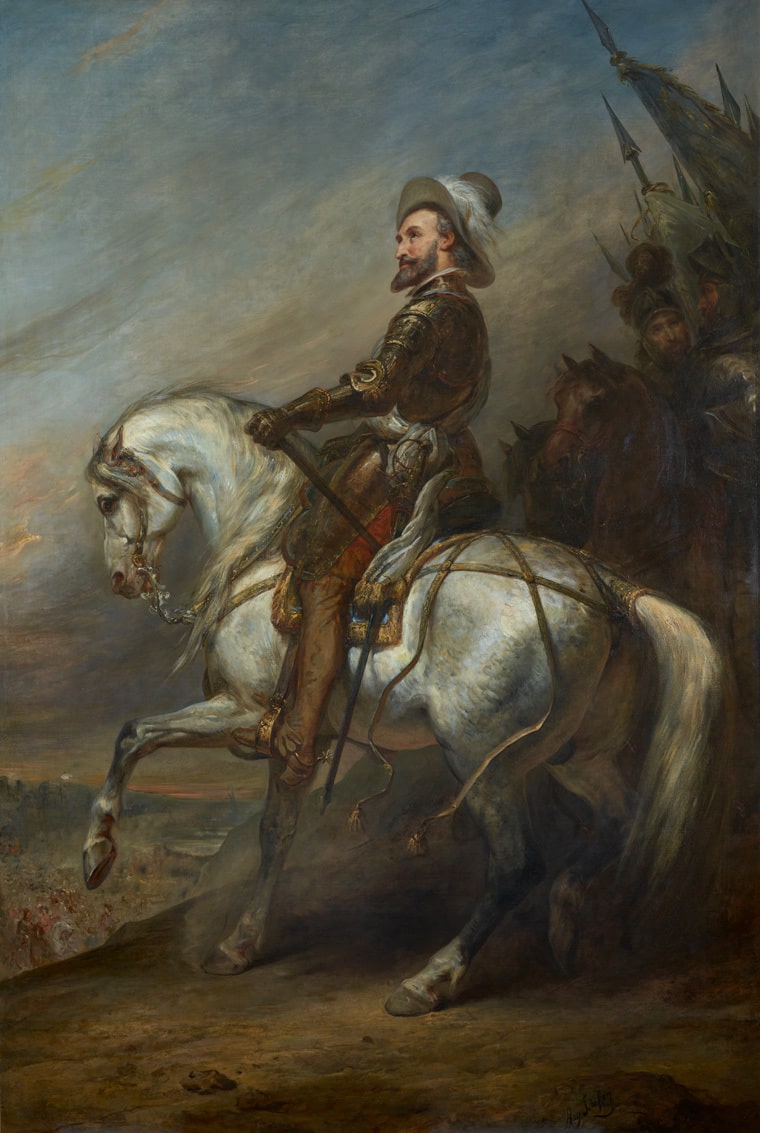
King Charles X (1757-1836) commissioned this Equestrian Portrait of Henry IV from Ary Scheffer in November 1828 for the state apartment at the Tuileries Palace. In the King's cabinet, it was added to a series of paintings glorifying the Bourbons. Henry IV was frequently depicted in the closing decades of the Ancien Régime, and this trend flourished under the Restoration; the founder of the last royal dynasty, who won his throne on horseback and at sword point, became one of the most popular figures in French national history. When the portrait was sent to Versailles for the decorative scheme in the Historic Galleries, Louis-Philippe had a hat added to Henry IV’s head unbeknownst to Scheffer, as he felt that it was not seemly for his ancestor to be depicted bare-headed on the battlefield.
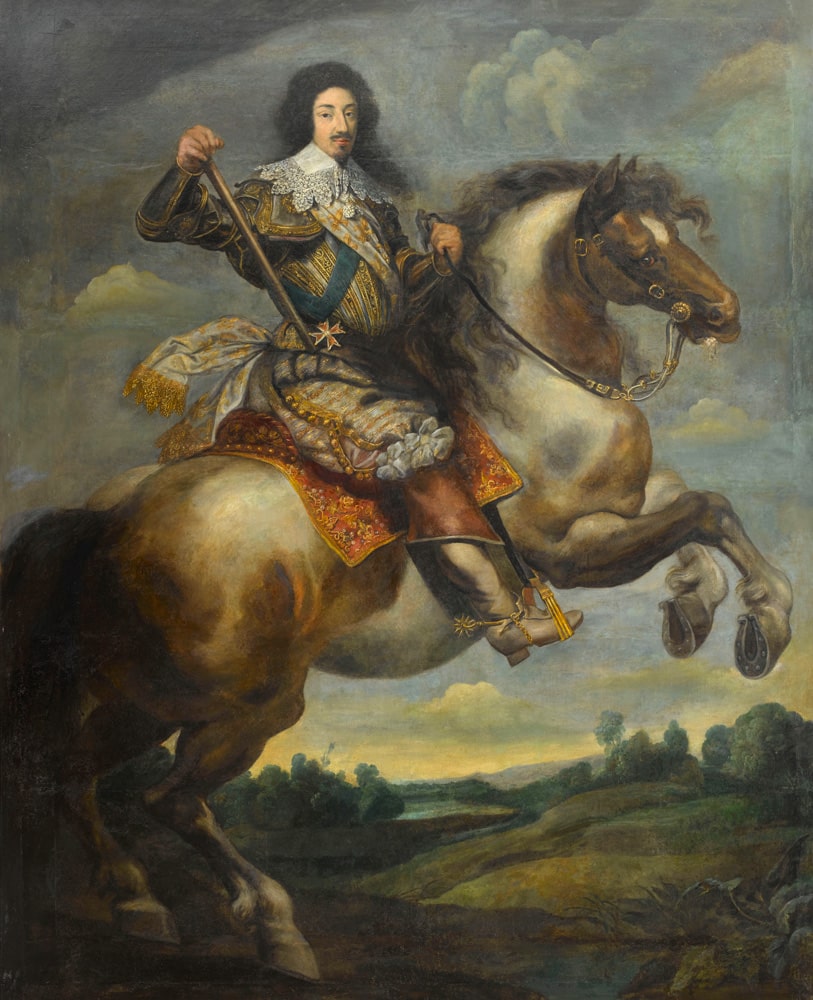
This picture was painted by Claude Deruet between 1630 and 1643. The artist depicts King Louis XIII on a rearing horse, holding his military commander’s baton and wearing the blue sash of the Order of the Holy Spirit. The sovereign is silhouetted against a landscape which reflects his power over his kingdom. Louis XIII was a keen rider and hunter and had the original hunting lodge built which Louis XIV and his successors transformed into the palace we see today.


This equestrian portrait depicts the young Louis XIV in armour after his triumphant entry into Paris on 18 April 1649 during the Fronde civil uprisings. He is given a crown of laurels by the figure of Fame, and an olive branch which symbolises the restoration of harmony. In the background is a view of the Pont-Neuf bridge with its statue of his grandfather, Henry IV, who made his entry into Paris to popular acclaim on 22 March 1594, in similarly turbulent times.

This portrait of Louis XIV commissioned by the Buildings Department of the royal household from a young artist and student of Charles Le Brun, is in the highly codified traditional equestrian portrait style. The King, depicted against the backdrop of the siege of a town, is holding his military commander’s baton as a sign of authority. He is riding a white horse which is rearing up as a symbol of victory. The animal is depicted in three-quarter view rather than in profile to create a dynamic effect; it is equipped with opulent stirrups and its harness is adorned with precious stones and diamonds to show the wealth and power of the rider. Its controlled spiritedness and splendid gait also reveal the sovereign’s total mastery of the art of horsemanship.
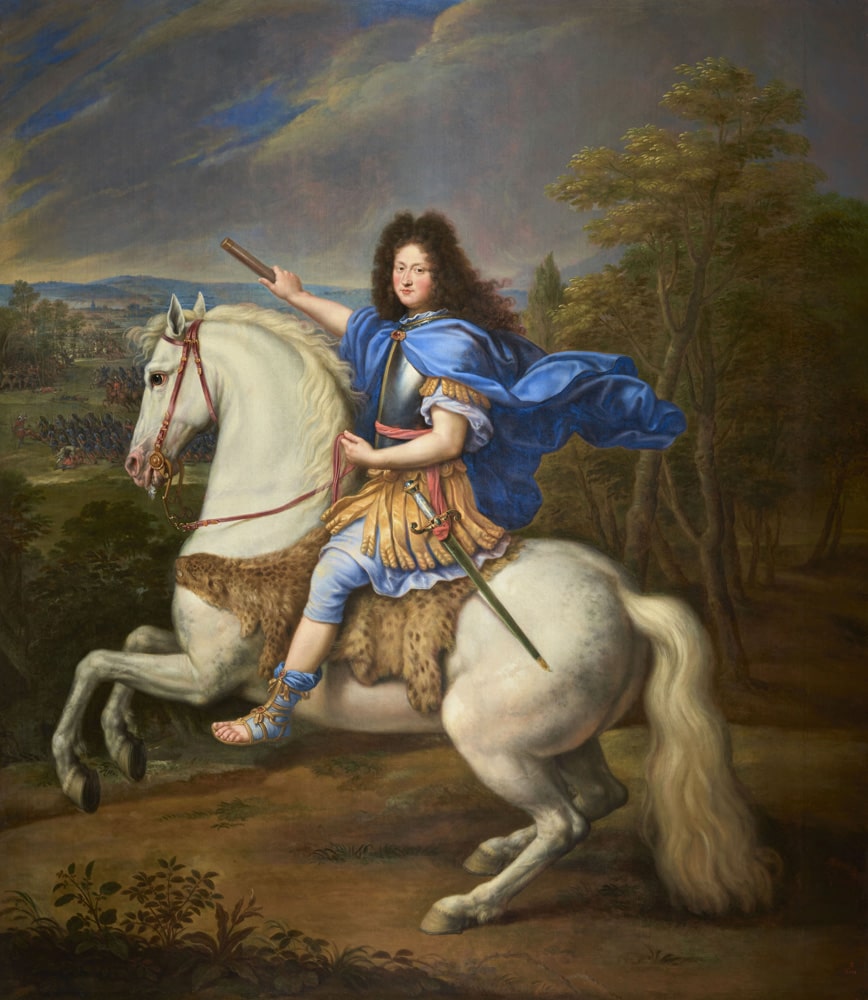

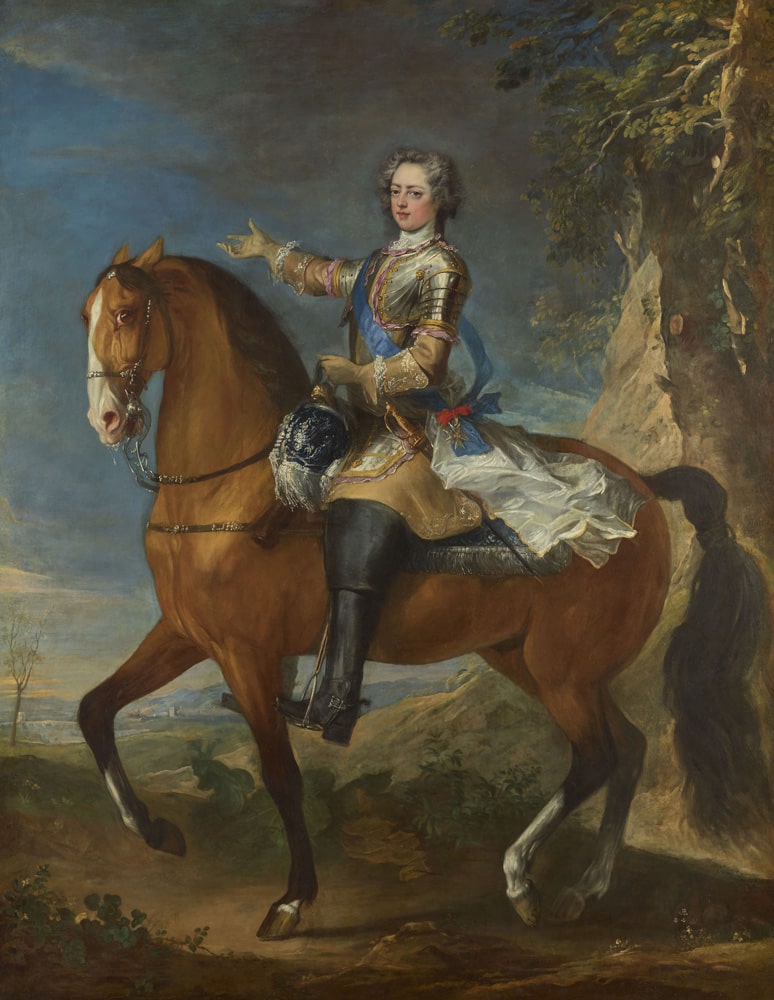
In 1723, the Duke of Antin commissioned an equestrian portrait of Louis XV from Charles Parrocel. The painter – who enlisted in the cavalry in 1705 – developed a taste and a talent for military subjects and horses. However, he did not believe that he was sufficiently experienced in portraiture and joined forces with Jean-Baptiste Van Loo, a famous history painter, who was a portraitist and therefore had the skill required to capture a likeness of Louis XV.
The thirteen-year-old sovereign is wearing a cuirass with a diagonal riband of the Holy Spirit – the most prestigious order of chivalry of the French monarchy – and has a white commander’s sash around his waist. This image of the horseman-king, with one arm extended as a sign of authority, was often favoured by the Bourbons. The pose, inspired by a Roman equestrian sculpture of Emperor Marcus Aurelius, demonstrates the young sovereign’s command over Montreuil military camp in September 1722.
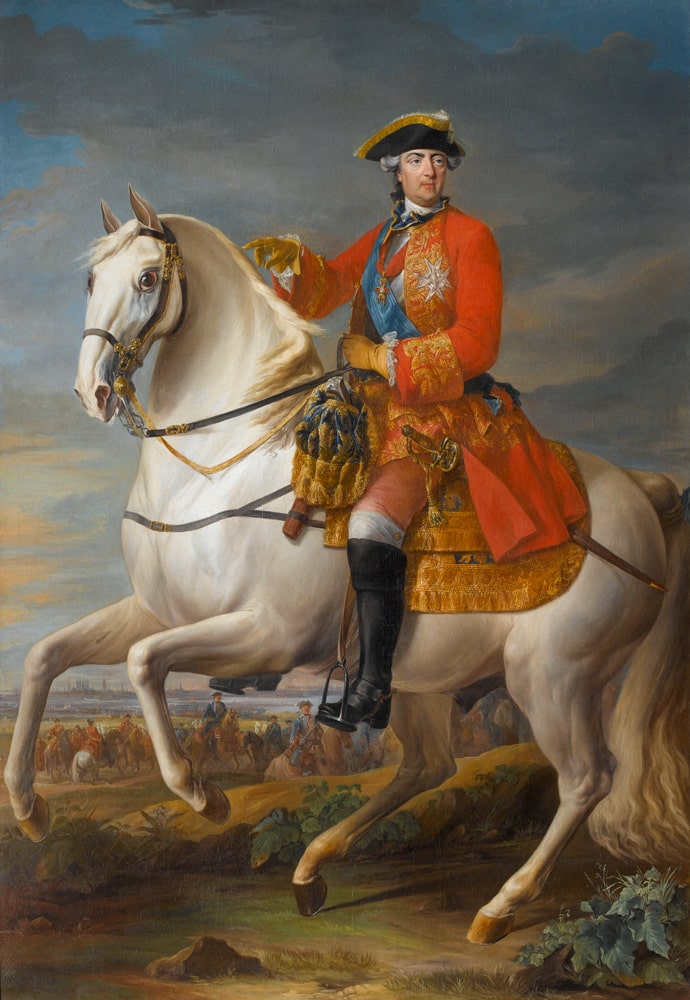
This painting was created by two artists: Louis-Michel Van Loo painted the portrait of King Louis XV, and Charles Cozette was responsible for the horse and background. The sovereign is depicted in red ceremonial military uniform on his white horse, as was customary in battle paintings. He is wearing the symbol of the Order of the Golden Fleece around his neck and has a tricorn hat on his head; a sabre is hanging against his left thigh. He shows no sign of emotion. He looks focused as he prepares for the battle which is depicted in the background to the rear of the horse. Behind Louis XV, riders are accompanying him and watching the siege from afar. In the distance, the French army is advancing on the town of Tournai, which was under siege from 30 April to 22 May 1745.
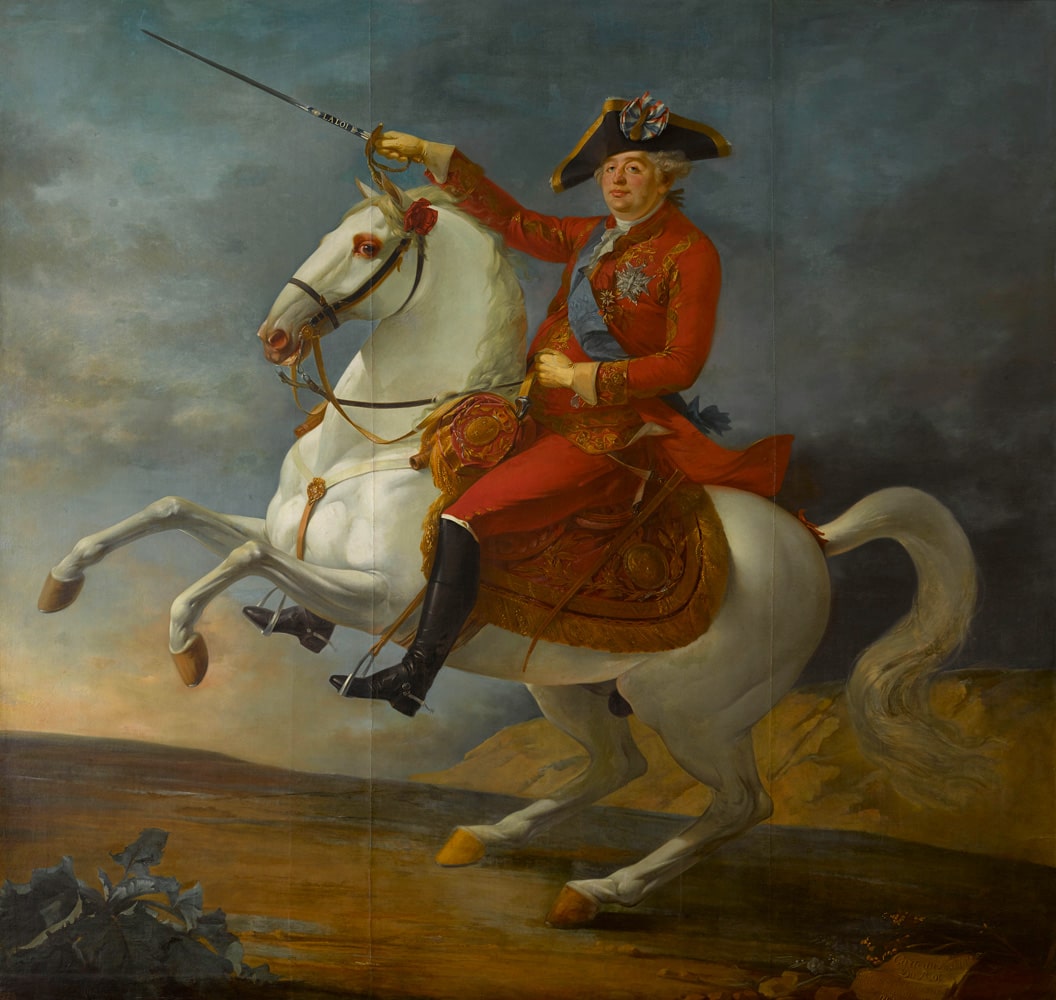
Louis XVI is depicted on horseback wearing a red jacket featuring the Order of the Holy Spirit and the Order of the Golden Fleece. On his hat is a red, white and blue rosette combining the colours of the monarchy and Paris, which the king agreed to wear on 17 July 1789. On the blade of his sword is the inscription "THE LAW". A stone on the lower right-hand side bears the signature: Carteaux Painter to the King officer of the Paris Cavalry 1791. The barren landscape is at odds with the traditional heroic military portrait suggested by the rearing horse. The monarch’s resigned expression reveals psychological depth, which shows that the artist has moved away from the art of official portraiture.

This oil on canvas was painted by Louis-Auguste Brun in 1783 and depicts Marie-Antoinette hunting. The queen was a very keen horsewoman and regularly followed royal hunts. Brun, who was dubbed “Marie-Antoinette’s painter”, was a key figure in the queen’s entourage. He often adopted a sombre palette enlivened with bright highlights. The dogs running in the foreground and the leopard-print saddlecloth on her horse are also recurring motifs in his works.
The trappings on Marie-Antoinette’s horse are similar to those of the Hungarian nobility at the Austrian court, thus recalling the sovereign’s origins. Several riders, including a page wearing a white turban with red feathers, complete the background scene.
The queen’s pose in this portrait is daring for the times. The artist has chosen to paint her sitting astride her horse in trousers. At this time, women, and the queen of France most particularly, did not wear trousers.

This famous portrait by David, commissioned after the Second Italian Campaign, is probably the most iconic image of Napoleon I (1769-1821) as a military leader. The model had asked the painter to depict him as “calm on a spirited horse”, and he rose to the challenge in masterly style. Horses are inextricably associated with the legend of Napoleon Bonaparte. In this heroic image, the horse and rider are blazing the trail for a new era by crossing the Alps, following in the footsteps of the great heroes of the past. Hannibal and Charlemagne had taken this route before him. Their illustrious names are carved in the snow-covered rocks by way of a reminder.
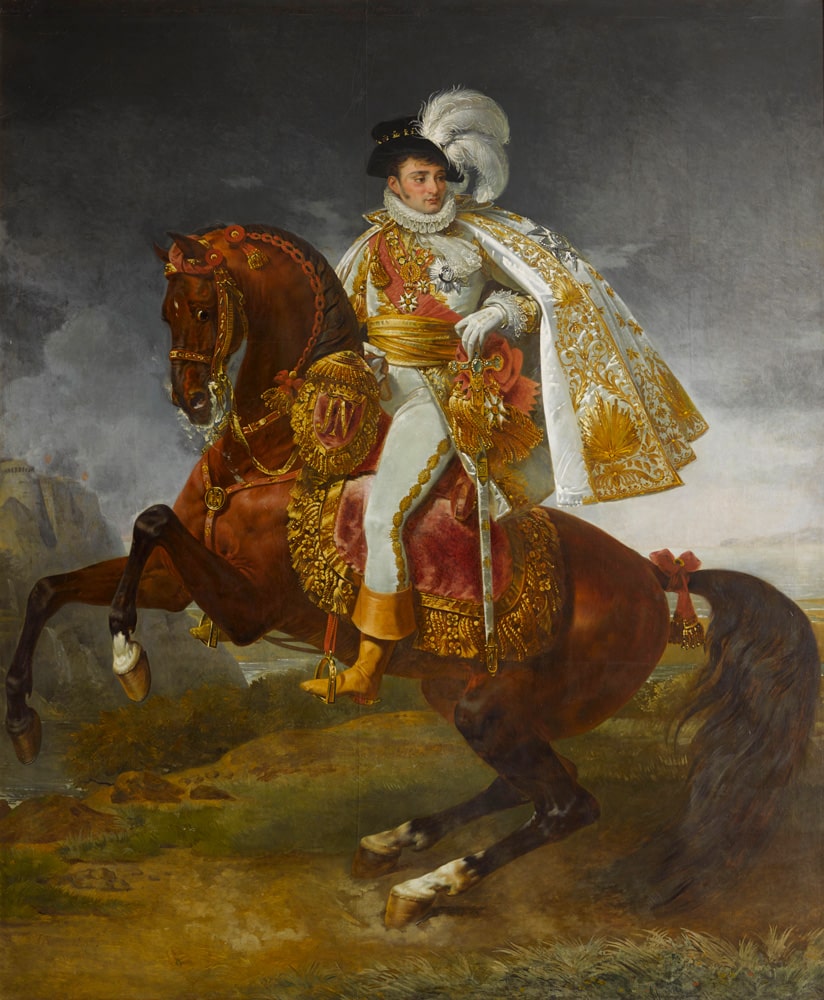
This picture was painted by Antoine-Jean Gros – a painter with close ties to the Bonaparte family – for the brother of Napoleon I, Jerome Bonaparte, King of Westphalia, who is depicted on horseback. There is a companion equestrian portrait of his wife, Catherine of Wurtemberg.
The king strikes a graceful and elegant pose on his mount, but the horse is rearing up, with its muscles bulging, in a more dynamic and warrior-like pose. However, it remains submissive, in order to show the power of its rider.
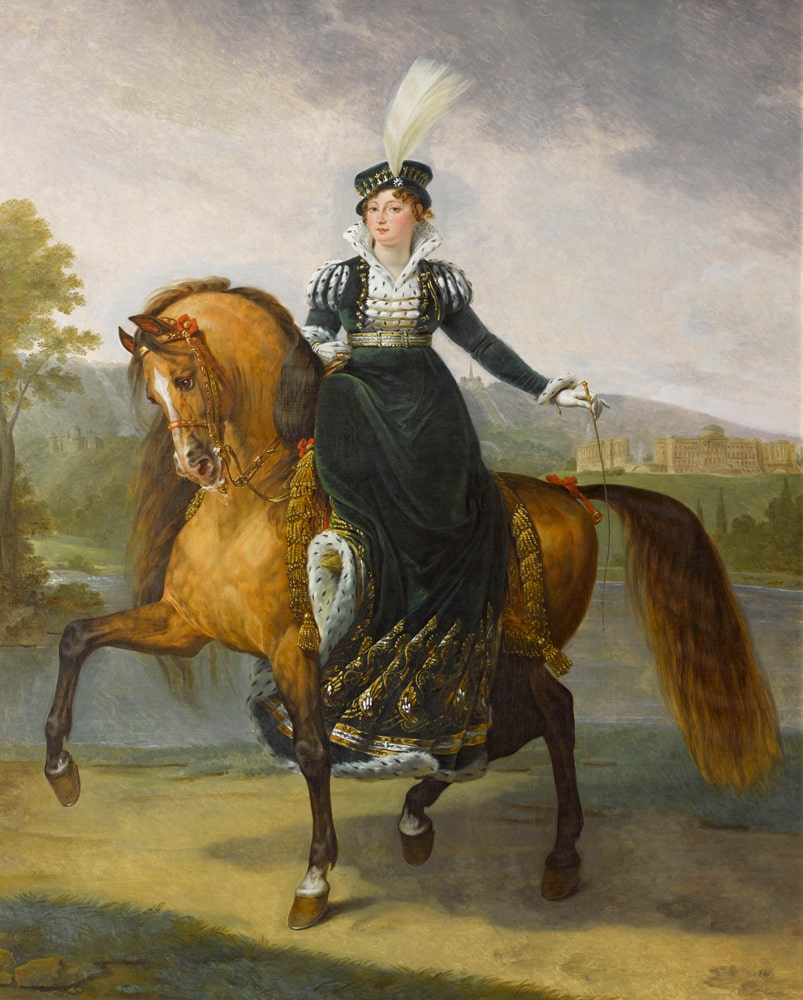
This portrait of Catherine of Wurtemberg was painted by Baron Antoine-Jean Gros between 1807 and 1835. Russian princess Catherine of Wurtemberg, also known as Catherine Bonaparte, married Jerome Bonaparte, King of Westphalia and brother of Napoleon I, in 1807. The queen is painted on horseback in front of a view of the castle and grounds at Wilhemshöhe, renamed Napoleonshöhe, close to the town of Kassel.
The horse is depicted in a natural manner, in motion, but not in an exaggerated pose. Its mane is loose and unbraided and it has one front leg raised as if it were dancing. The queen is holding a riding crop and is ordering it to perform a step: the piaffe. This attitude is elegant and in keeping with contemporary visions of womanhood.
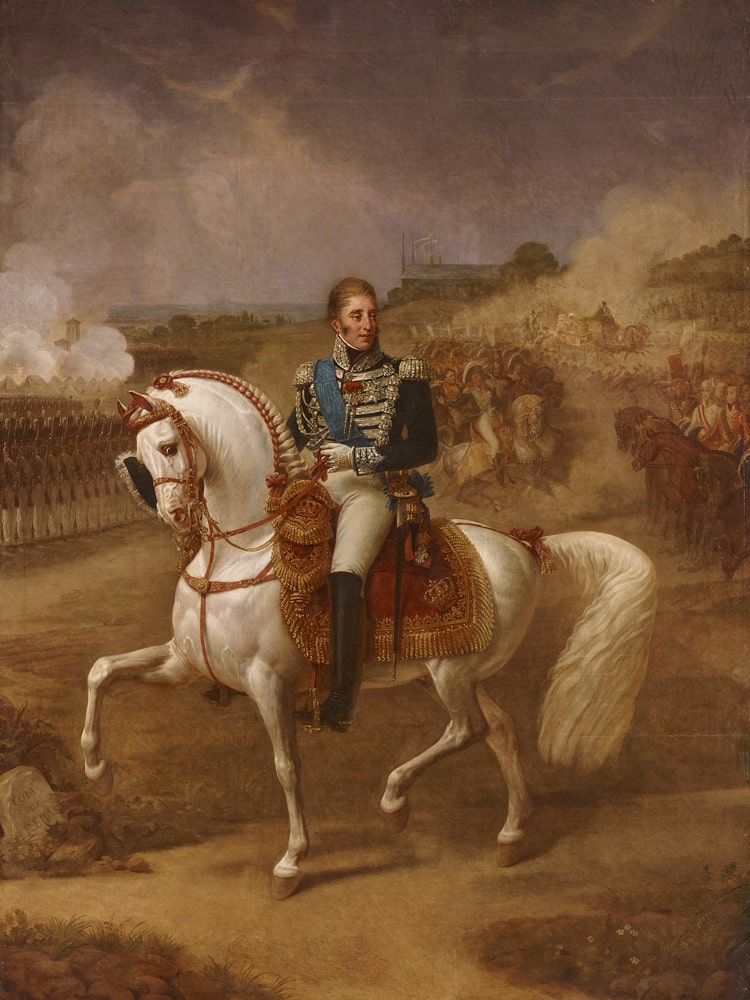
This painting shows King Charles X reviewing the troops several days after his coronation ceremony. He is riding a white horse and is wearing the uniform of a colonel general of the King’s Guard and several decorations: the cross of the Order of Saint-Louis, the insignia of the Golden Fleece, the cross of the Legion of Honour, and the large embroidered cross of the Order of the Holy Spirit. On the left are the grenadiers of the Royal Guard. Behind the King, the Duke of Angoulême, in officer general’s uniform, and Duke Louis-Philippe of Orléans, in the uniform of a colonel of the Hussars, are also depicted on horseback. In the background, an open carriage is transporting the princesses, the Duchesses of Angoulême and Berry, and the Duchess and Mademoiselle of Orléans. On the right, ambassadors on horseback from foreign powers are facing the group of princes.
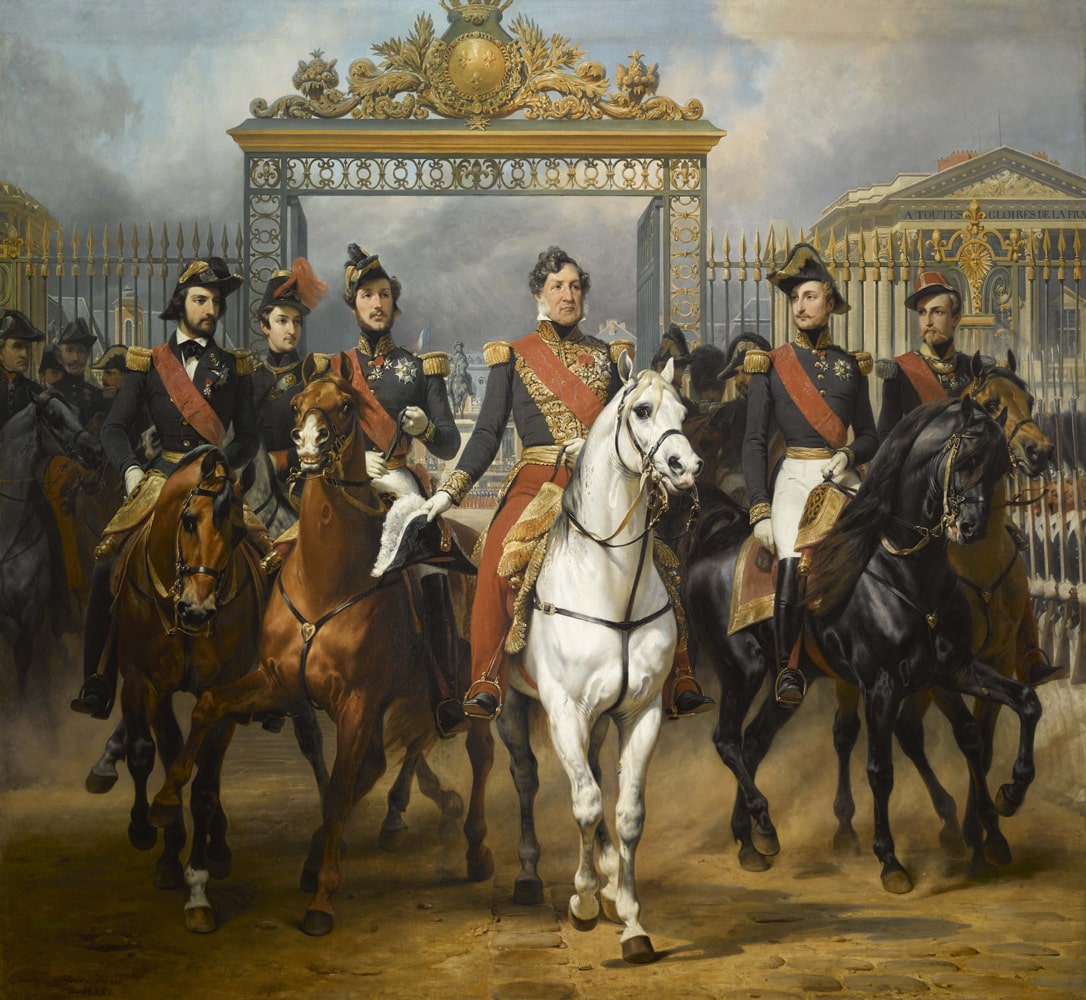
King Louis-Philippe and his sons are on horseback in front of the royal gate of the Palace of Versailles, with the equestrian statue of their ancestor, Louis XIV, in the background. The princes are arranged around their father as dictated by protocol. To his right are: Ferdinand-Philippe, Duke of Orléans and Prince Royal (even though he died in 1842); François, Prince of Joinville; and Antoine, Duke of Montpensier, who is slightly further back. To his left are: Louis, Duke of Nemours, and Henri, Duke of Aumale. They are all wearing the uniform of officers general.
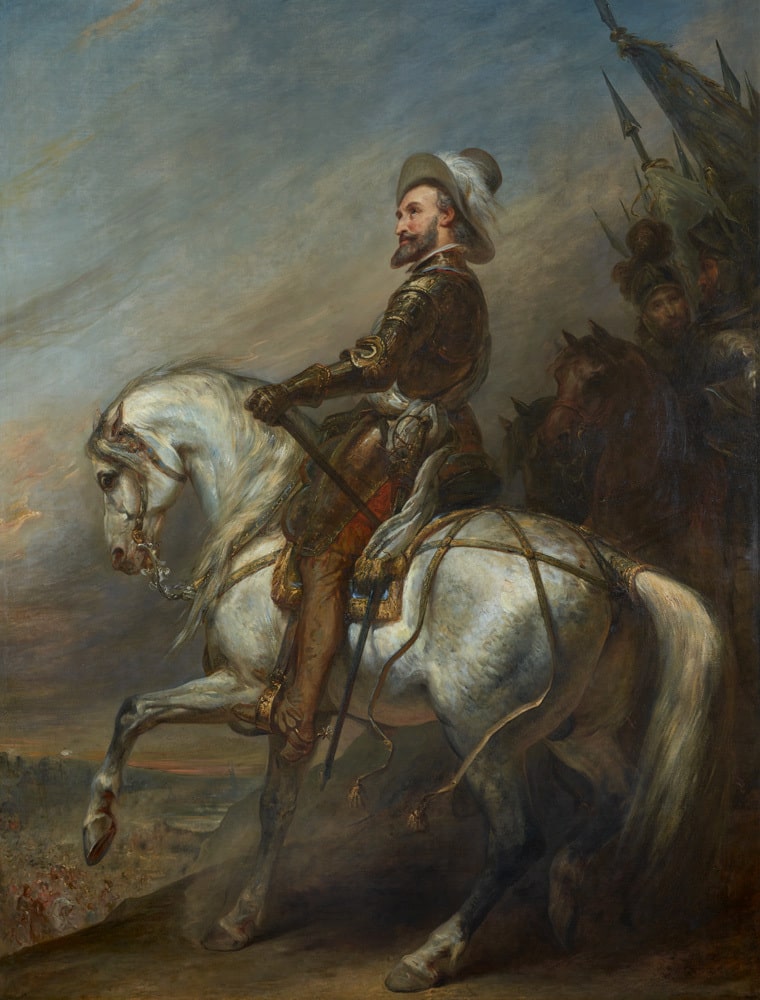
Equestrian Portrait of Henry IV, King of France
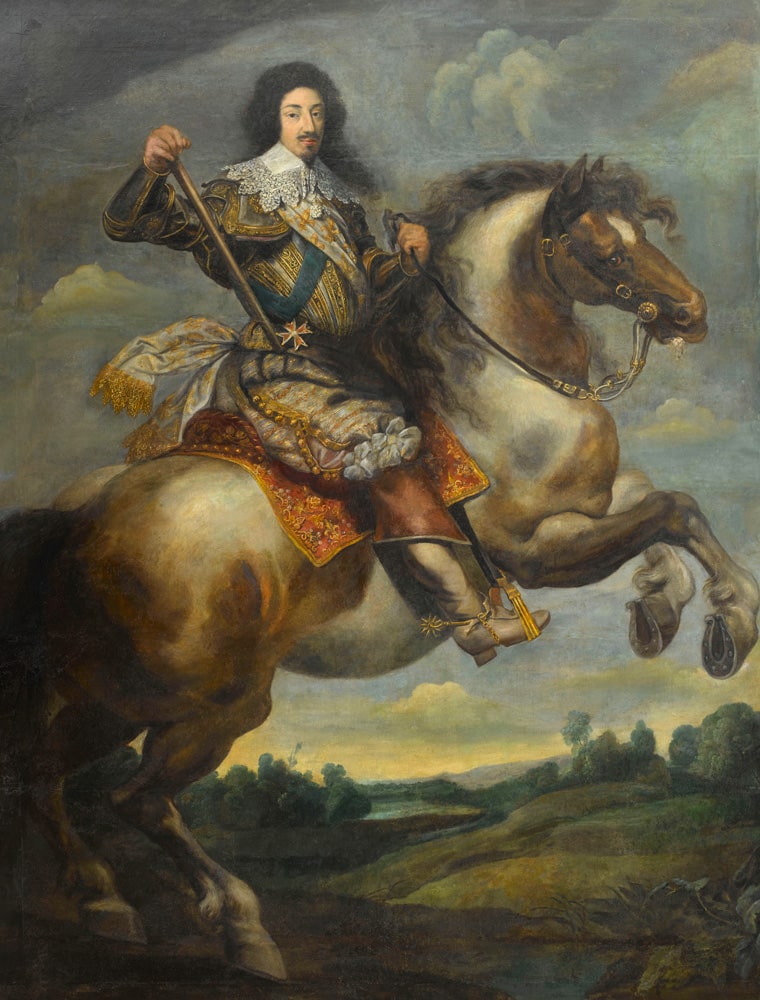
Louis XIII, King of France (1601-1643)
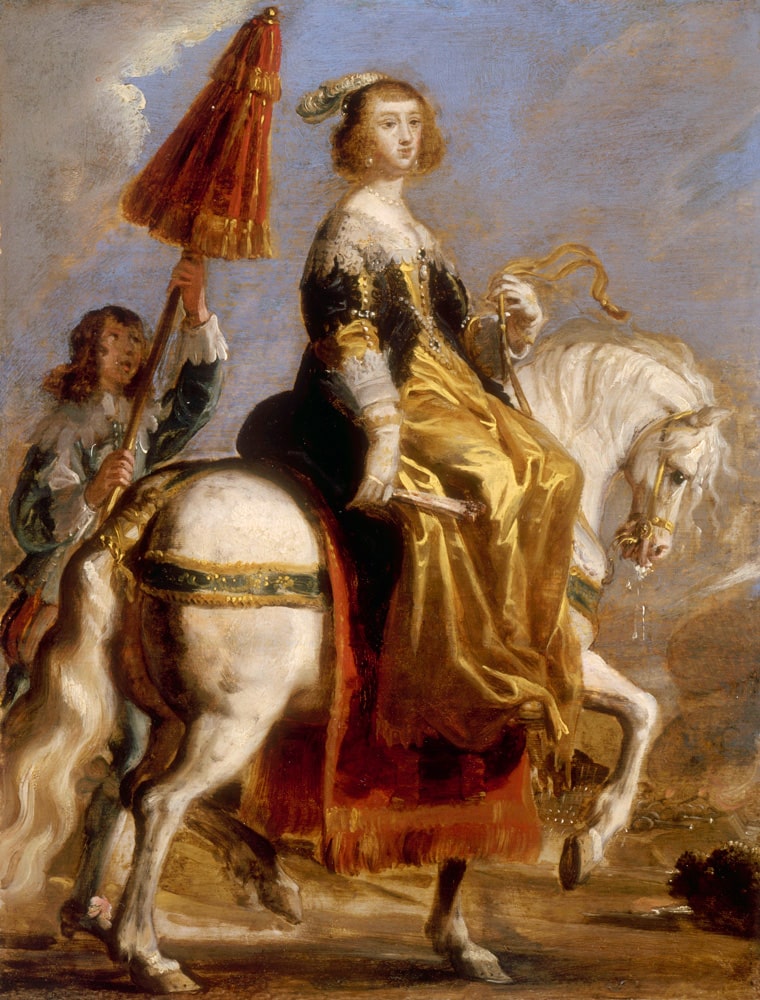
Equestrian Portrait of Anne of Austria
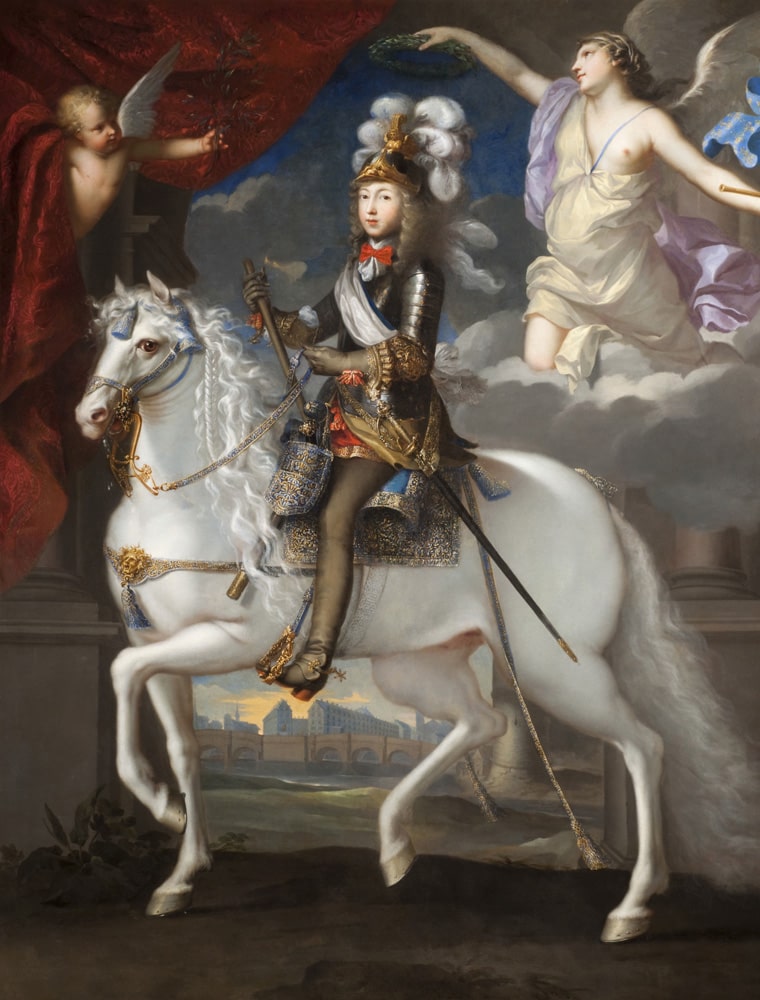
Louis XIV, King of France (1638-1715),
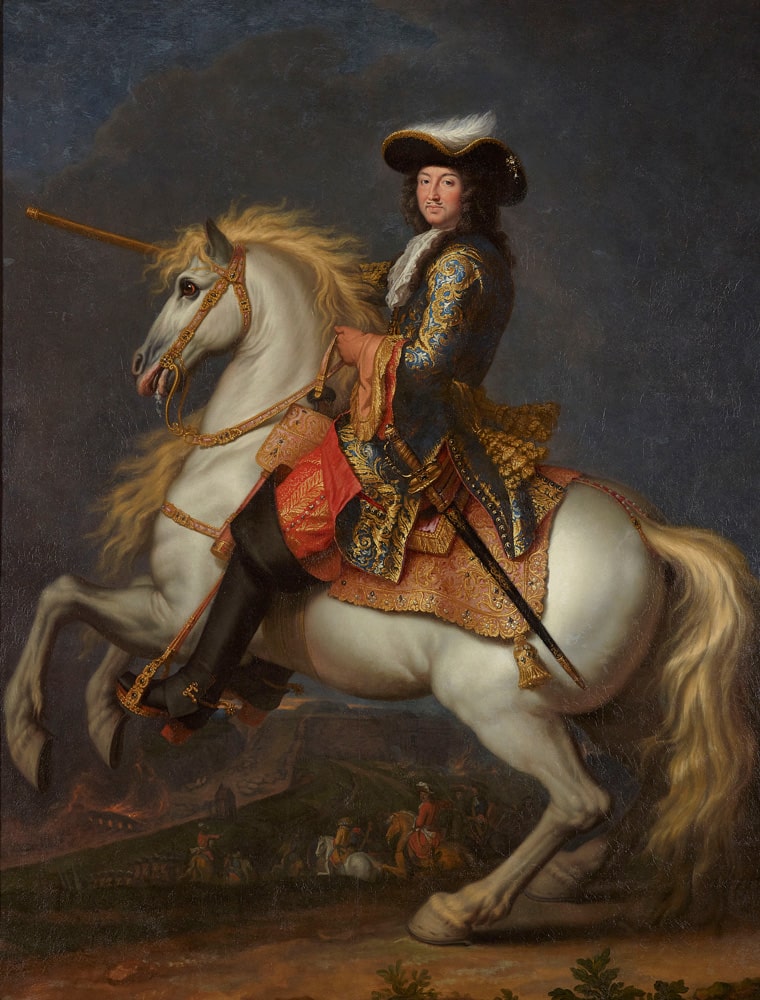
Louis XIV, King of France (1638-1715),

Philippe of France, Duke of Orléans

Maria Theresa of Austria on Horseback
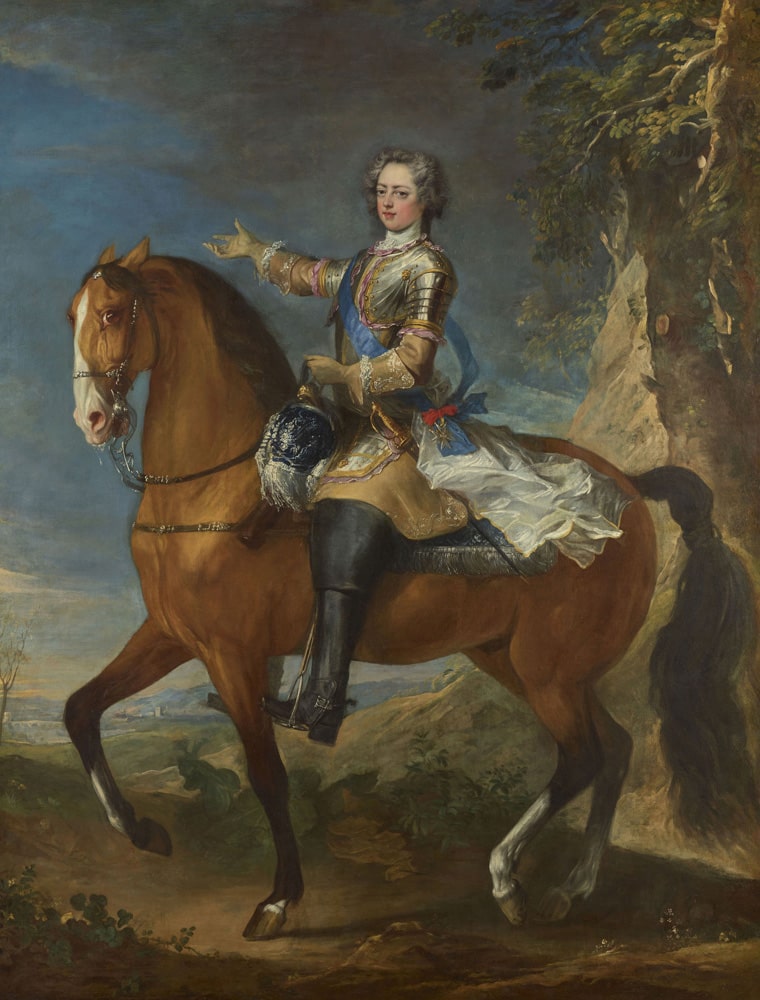
Equestrian Portrait of Louis XV, King of France
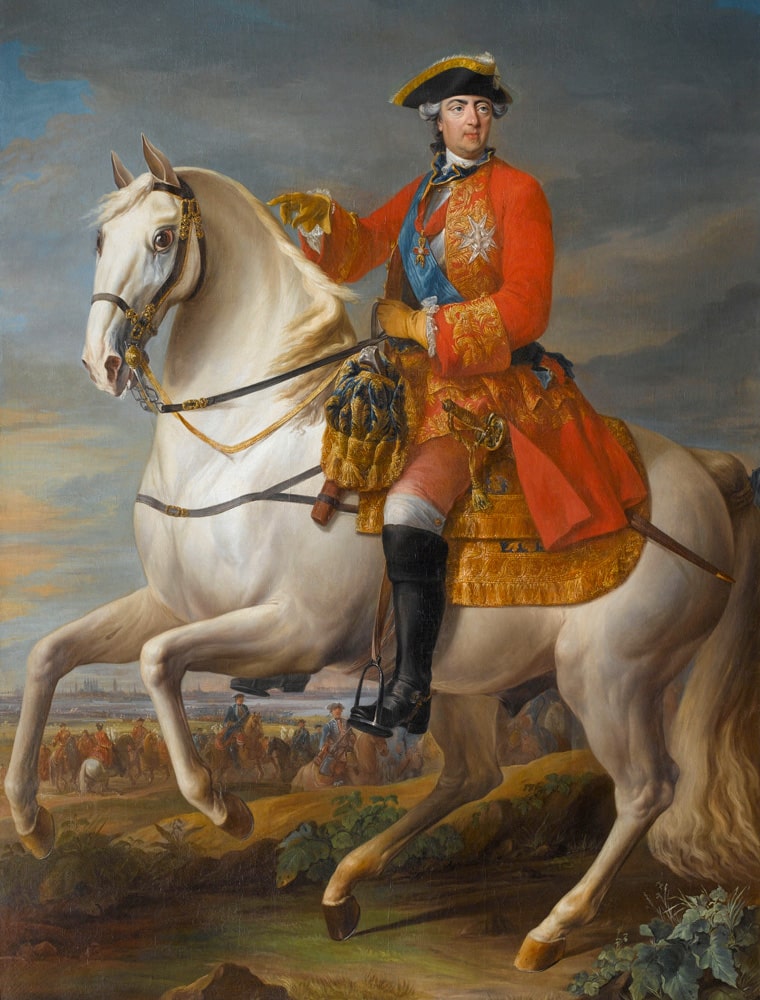
Louis XV, King of France (1710-1774)
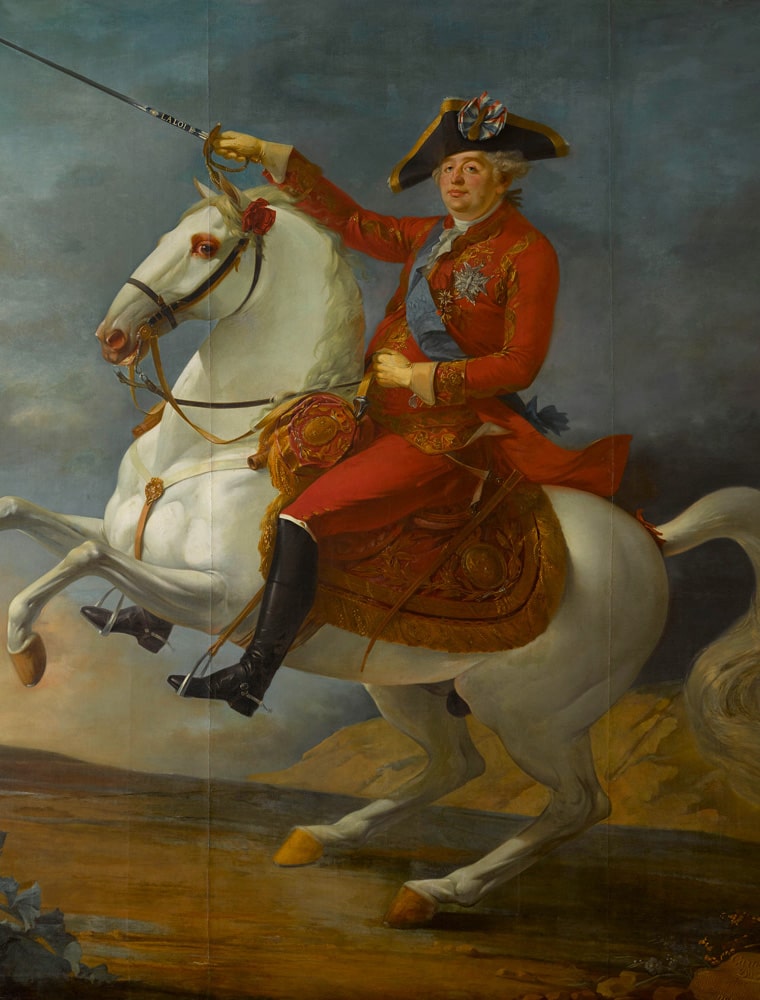
Louis XVI, King of France (1754-1793)
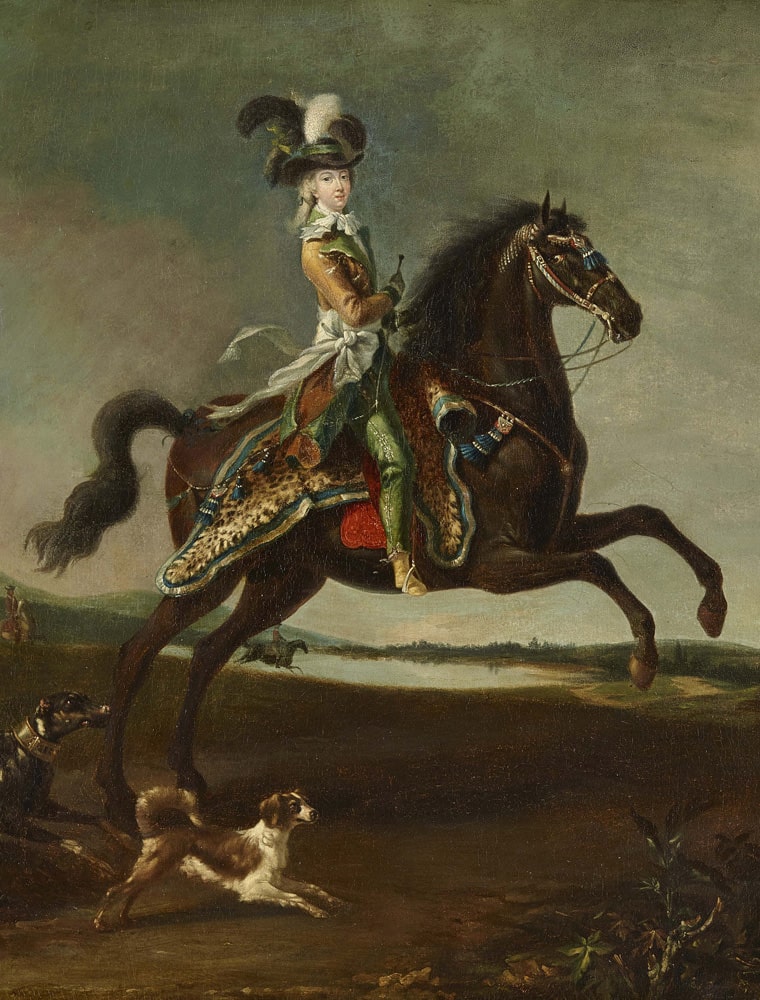
Marie-Antoinette, Queen of France on Horseback
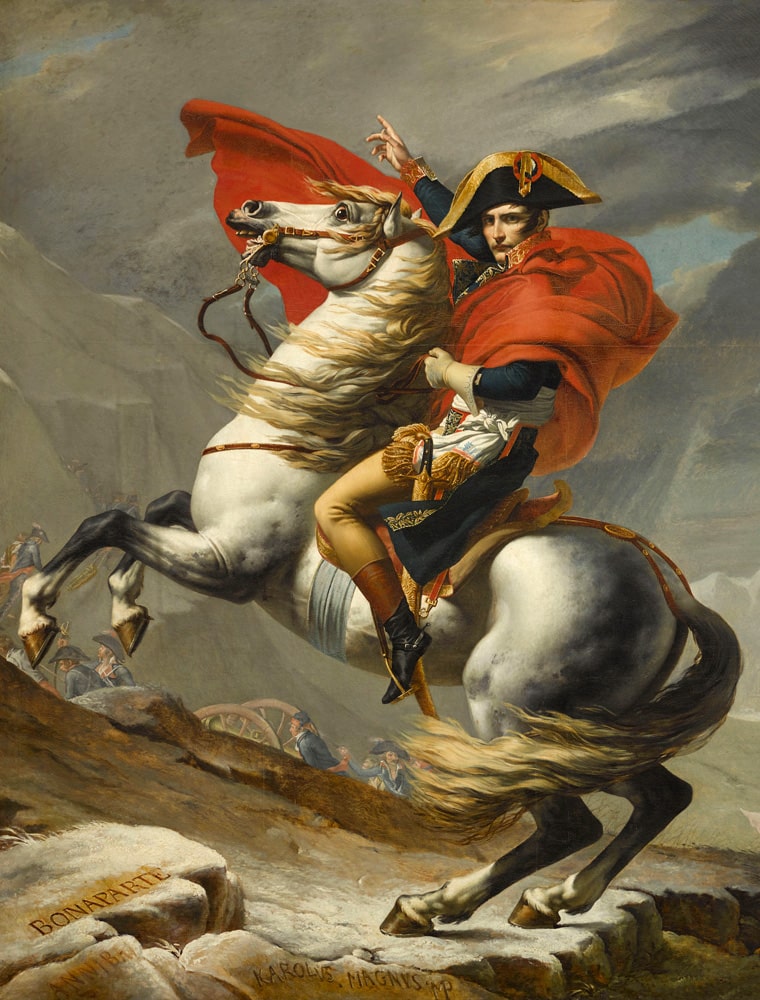
Bonaparte Crossing the Great St Bernard Pass, 20 May 1800
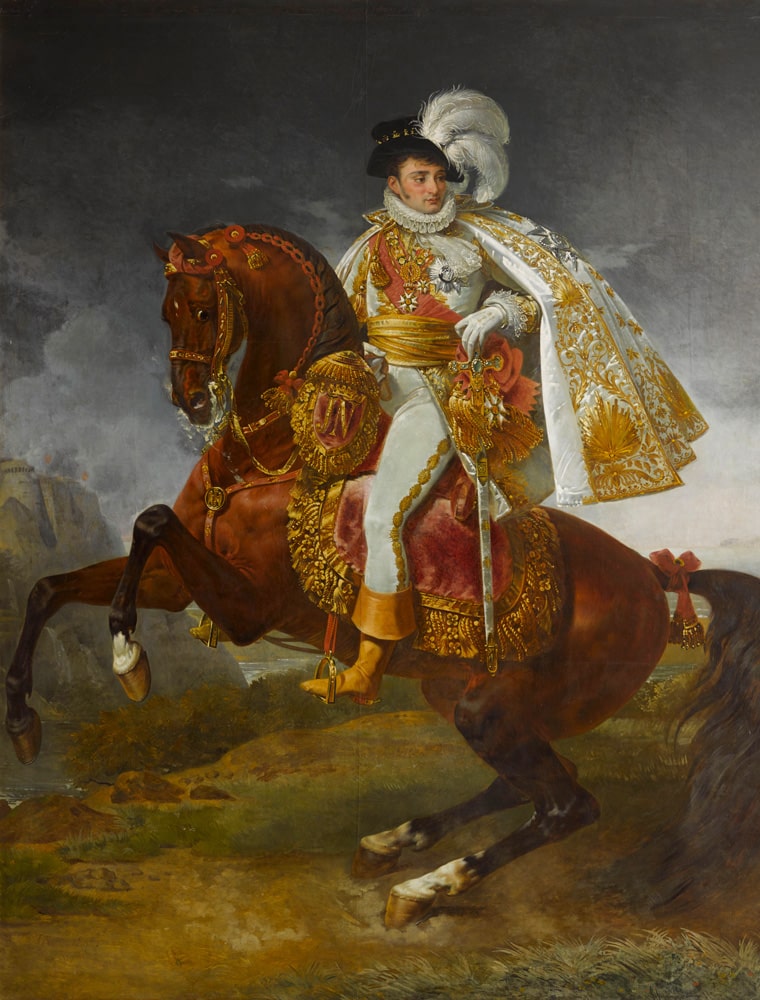
Jerome Bonaparte, King of Westphalia (1784-1860)
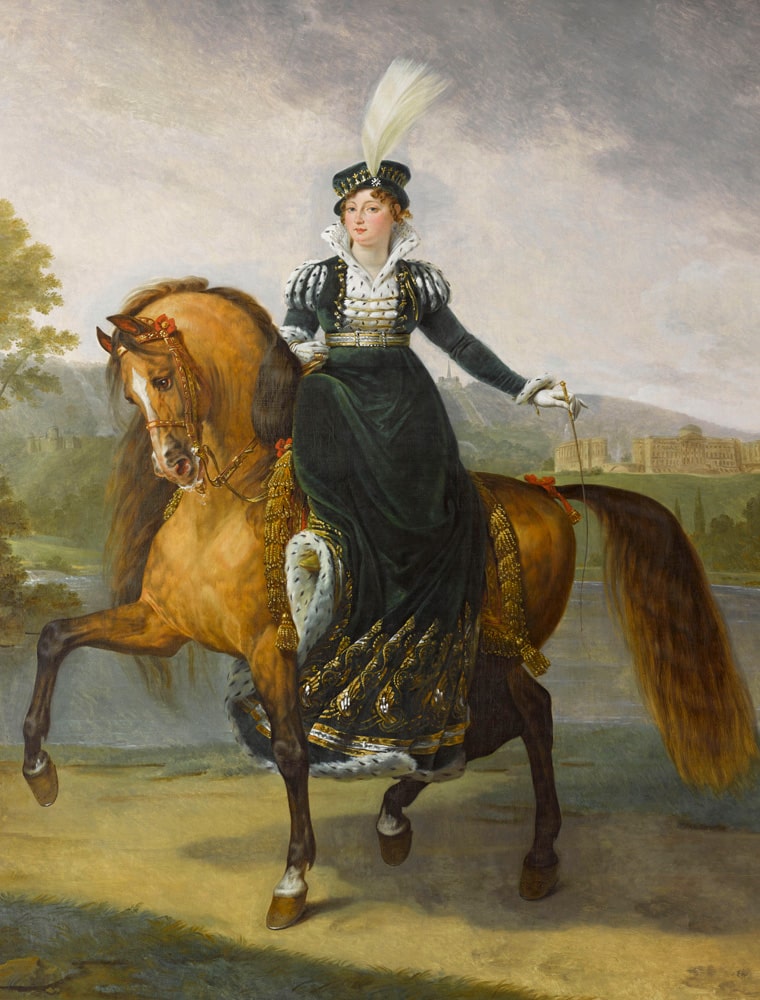
Catherine of Wurtemberg, Queen of Westphalia
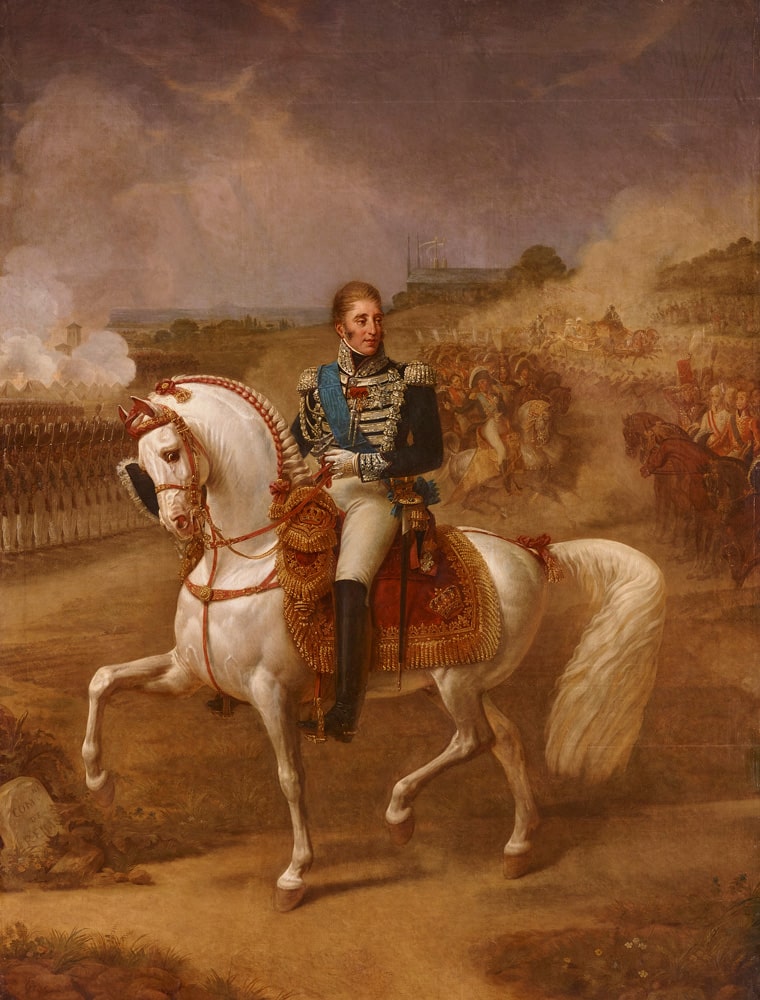
Charles X Reviews Saint-Léonard Camp at Reims, 31 May 1825
Elite horses
Louis XIV, who had a particular interest in horses, founded the National Stud Farms in 1665 on the advice of Colbert to improve French horse bloodlines. At Versailles, the King built the Great and Small Stables between 1679 and 1682, which housed some 700 horses by the end of his reign, three-quarters of which came from abroad. They were carefully selected and visitors marvelled at their beauty and at the quality of their dressage.
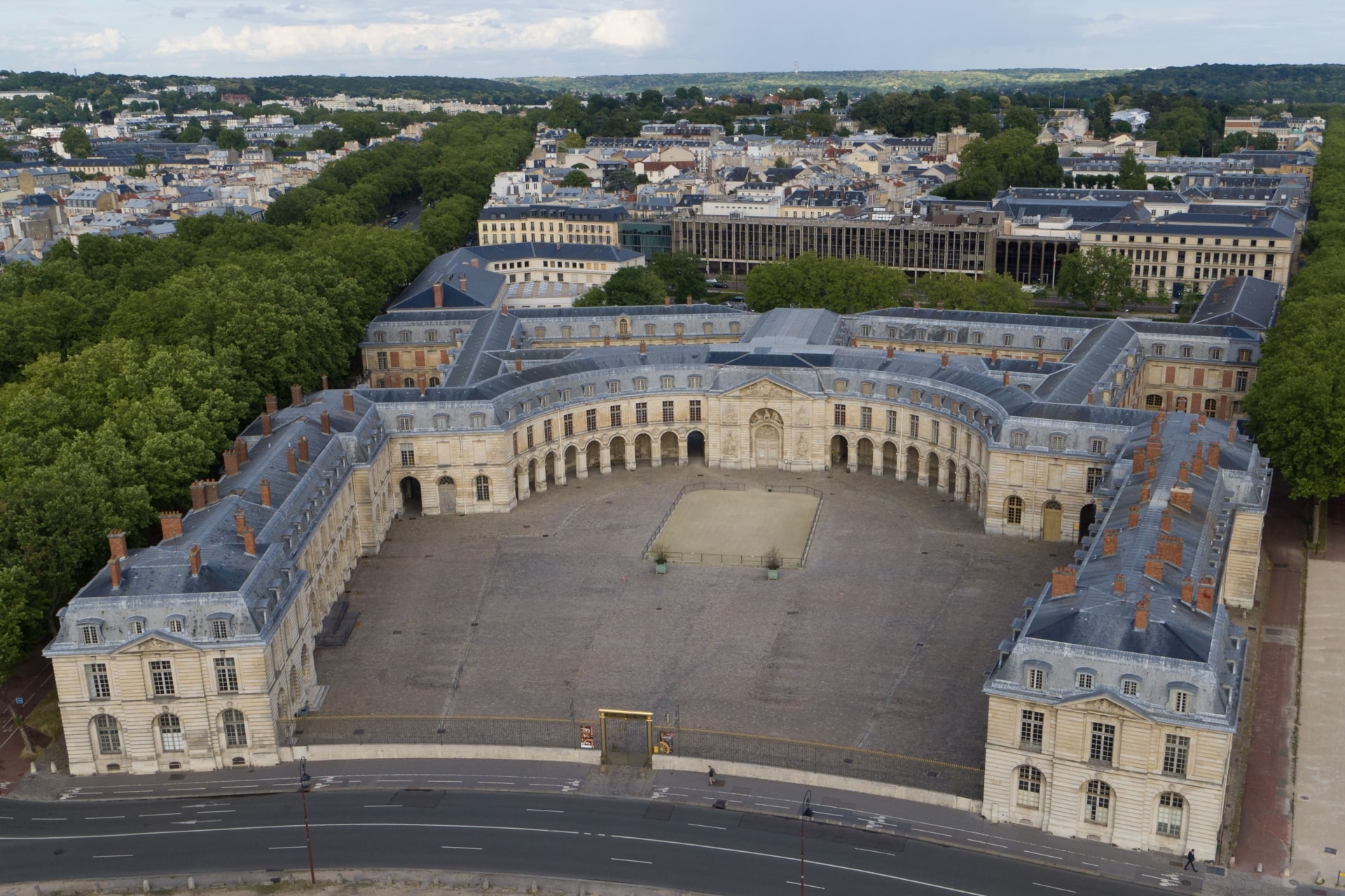
The Versailles School
Soon after the Great Stable was inaugurated, the Versailles School was established there and quickly became the cradle of academic riding in France. It drew inspiration from the treatise School of Horsemanship by François Robichon de la Guérinière (1688-1751), a famous riding master at the Parisian manège in the Tuileries, where he taught dressage steps and figures that turned horses and riders into true dance partners. In dressage competitions, and notably in the Olympic Games, all the elements defined during this period – regularity at different gaits, and movements such as the piaffe (a cadenced trot on the spot), passage (a short trot), and Spanish walk – are still performed today.
During the Enlightenment (1715-1789), French riding reached an unprecedented level of sophistication, and the reputation of the Versailles School was unrivalled. The classical term of dressage was coined during this period.
The French Revolution sounded the death knell for equestrian academies as riding masters moved to other European countries. All of the horses, including the 2,208 inventoried in the royal stables, were sold as revolutionary assets. Horses resumed their military role under Napoleon, and then to an even greater extent when Louis XVIII created the school for the instruction of mounted troops in Saumur (Maine-et-Loire), in 1814, and revived the Versailles School. They existed in parallel for some fifteen years until the Versailles School, which was not deemed to be serving any useful purpose, was closed permanently in 1830, and the Saumur school became the sole repository of the French equestrian tradition.
Versailles, an Olympic Games 2024 venue
Equestrian sports in the modern Olympic Games
On the basis of its international renown and its historic link with the world of horses, the Palace of Versailles has been designated the host venue for the equestrian events of the Paris Olympic Games 2024. Individual and team medals are awarded in three disciplines:
Jumping is one of the most prestigious and best-known disciplines in the riding world. Horse and rider must complete a course against the clock over jumps in different categories of height, length and difficulty. The aim is to achieve a clear round, as every pole knocked down incurs a penalty.
Dressage is the highest expression of horse training. The horse-rider pairing performs an artistic series of figures in a reprise.
The jury judges smoothness and flow as the pair move around the arena.
A third discipline, eventing, is a form of equestrian triathlon. It combines the two disciplines described above (jumping and dressage) with a third event: cross-country. This consists of a long course with a mixture of natural and static obstacles to test competitors’ endurance and experience. The best overall horse and rider pairing at the end of the three events is the winner.
Riding is the sole sport where animals and humans work as a team and is, moreover, the only fully mixed discipline in the Olympic Games. However, this was not always the case, and equestrian events have developed over the course of the modern Olympic Games since their debut in Paris in 1900.
The development of riding in the modern Olympic Games
Paris: riding features on the programme
Four years after the first modern Olympic Games in 1896 in Athens (Greece), equestrian sports feature among the disciplines. The five events organised by the French Equestrian Society take place on Avenue de Breteuil (in the 7th arrondissement of Paris) rather than on the banks of the Seine like all the other events. However, only three events are recognised by the International Olympic Committee (IOC): showjumping; the high jump with an 1.85-metre obstacle cleared by French rider Dominique Gardères and his mare Canela; and the long jump, for the first and last time, with a winning jump of 6.10 metres.
Despite the French Equestrian Society’s very healthy balance sheet, the International Olympic Committee refuses to include equestrian sports in the 1904 and 1908 Olympic Games.

© Ville de Paris / BHVP (photographie Henry de Lestrange)
Stockholm: a full programme of events is presented
Equestrian sports are introduced as a permanent fixture on the Olympic programme at the Games in Stockholm (Sweden) at the instigation of Count von Rosen, the King of Sweden’s Grand Equerry. The events include the “Military”, which is similar to the modern eventing competition. Taking place over the course of five days, it consists of dressage, jumping, and endurance and speed events with an 80-kilogramme minimum weight-bearing requirement for horses, with lead weights being added to the saddles of riders who are too light. The same rider competes in all the events, but can change horses.
This is also the first time that dressage is an event in its own right.
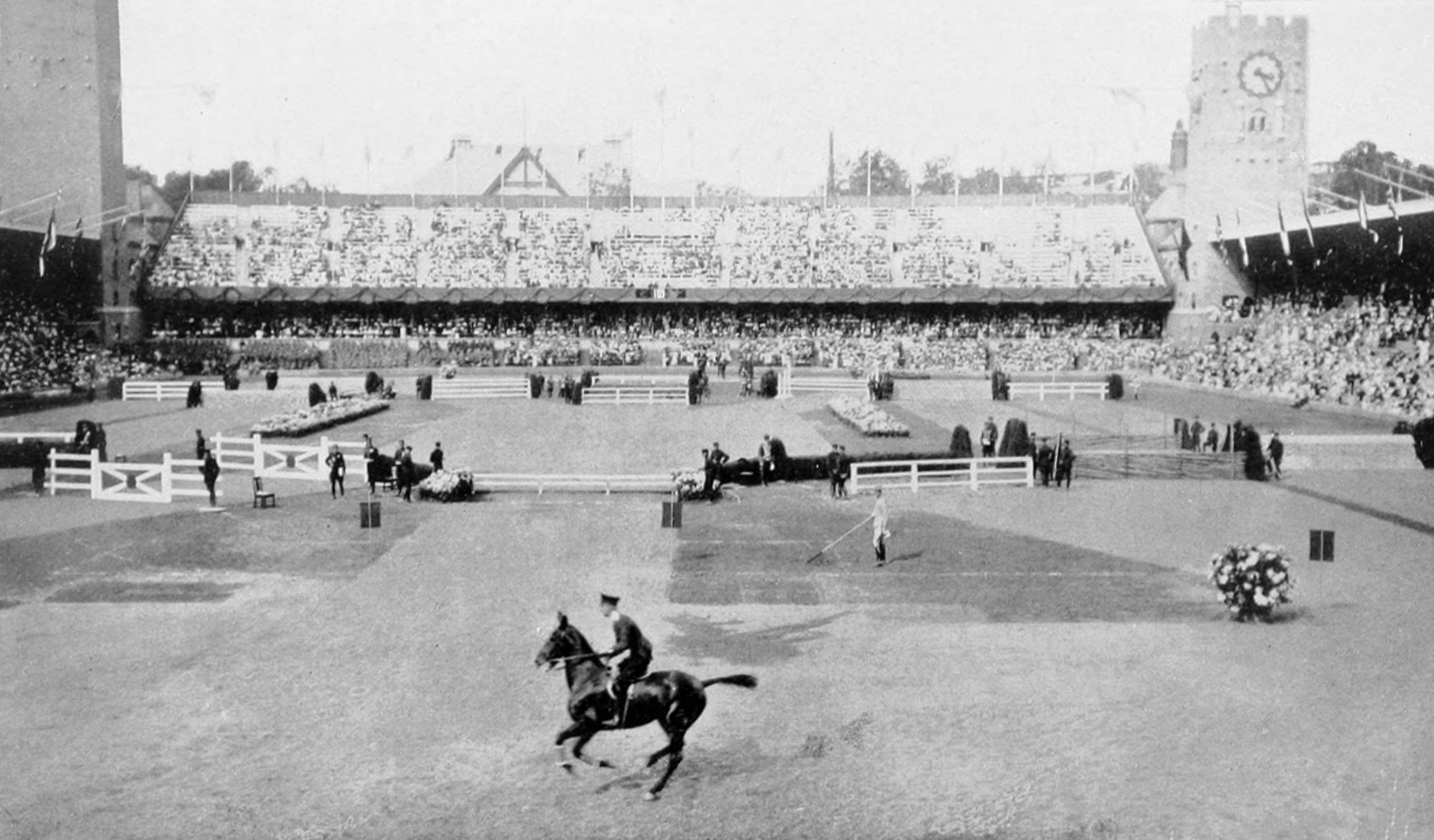
© CIO (CC)
Antwerp : the current jumping position makes its debut
The Olympic Games in Antwerp (Belgium) feature a vaulting event for the first and last time, but a new riding position for jumping obstacles is introduced by the Swedish team. This “suspended” upright position in the stirrups, which reduces the strain on the horse and is much more practical, becomes the default position for all riders.

Paris : a cross-country event is added to the competition
Riding events take place in Colombes (Hauts-de-Seine) and at Auteuil racecourse (Paris, 16th arrondissement). This is the starting point for the 36-km cross-country race to Villacoublay (Yvelines), an event which never features in the programme again.
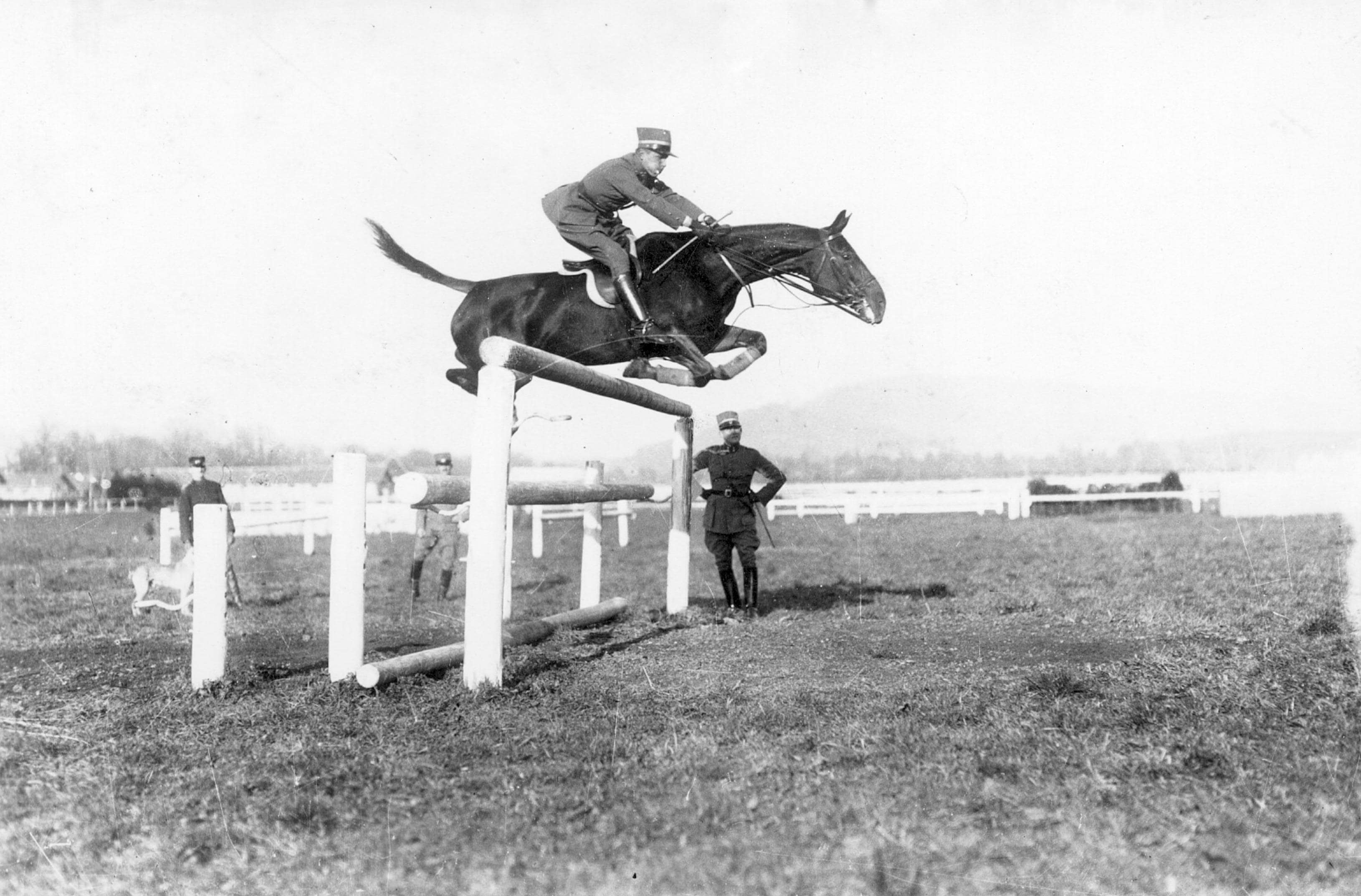
© Alamy
Los Angeles : horses travel outside Europe
Equestrian events take place outside Europe for the first time, in Los Angeles (United States), which means lengthy travel times for horses. The French and Swedish teams opt for a sea crossing to New York City followed by a train journey to California. The Dutch team installs a treadmill system on its boat, which is specially designed to allow horses to exercise their legs in transit. Japanese rider Takeichi Nishi wins the gold medal in the jumping event, Japan’s first and only Olympic riding victory.

© CC
Helsinki: equestrian events are open to non-military competitors and one event is open to women
Riding becomes a permanent fixture at the Olympic Games in three individual and team events: jumping, dressage, and eventing. The competition, which until this point has only allowed military officers to take part, is opened up at the Olympic Games in Helsinki (Finland) to non-military competitors with both men and women now competing, as women are authorised to take part in the dressage event. The silver medal in dressage is won by Danish rider Lise Hartel, an athlete with polio-related disabilities.

© picture-alliance / dpa
Tokyo : women can compete in all events
After the dressage event, jumping is also opened up to women in 1956, but women riders are not allowed to compete in all three equestrian events until the 1964 Olympic Games in Tokyo (Japan), making this the first fully mixed Olympic sport.
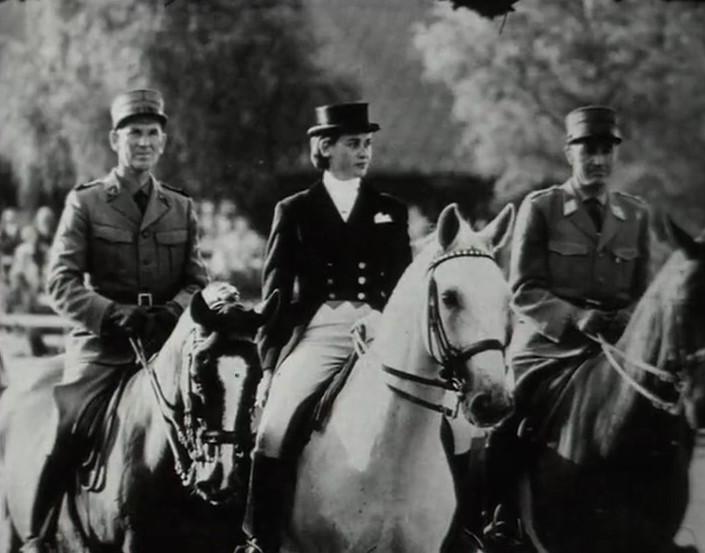
© rts.ch
Atlanta : para-dressage is introduced
36 years after the invention of the Paralympic Games in Rome (Italy) in 1960, an equestrian event is introduced to the Paralympic Games in Atlanta (United States) in 1996: para dressage.
Versailles, an exceptional site
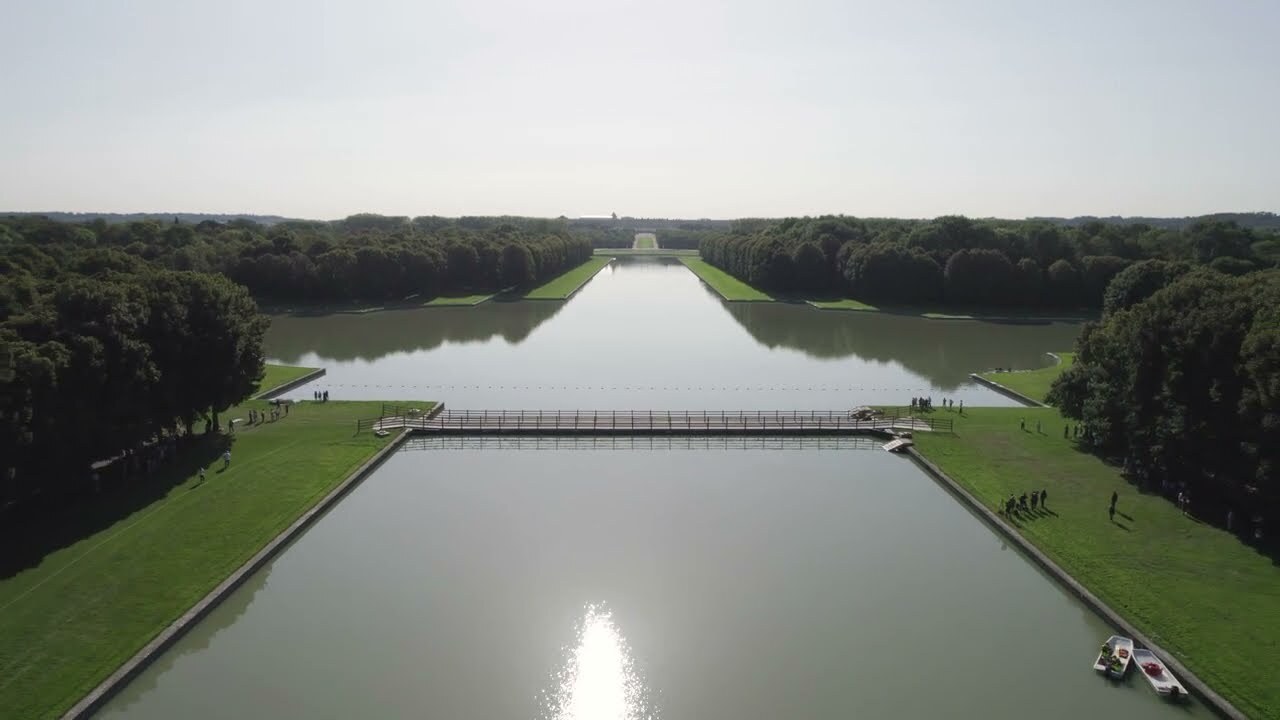
The national estate of Versailles has been designated as the host venue for the equestrian events of the Olympic Games 2024, which will open with eventing from 27 to 29 July, followed by dressage from 30 July to I August and, lastly, jumping from 2 to 6 August. The modern pentathlon – which also includes a riding event – will take place from 9 to 11 August, and para dressage will be held from 3 to 7 September 2024.
Temporary infrastructure has been erected at the Étoile royale site to the west of the Grand Canal. Significant work has been undertaken to level the ground, which will be fully restored to its original state when the Games are over. An 8,250 m² arena with grandstands in a “U” shape opening onto the Grand Canal has been installed there to accommodate 16,000 spectators. However, some 40,000 spectators are expected to attend the cross-country event in the Palace grounds, where riders will cross the Grand Canal on wooden pontoons specially built for the occasion.
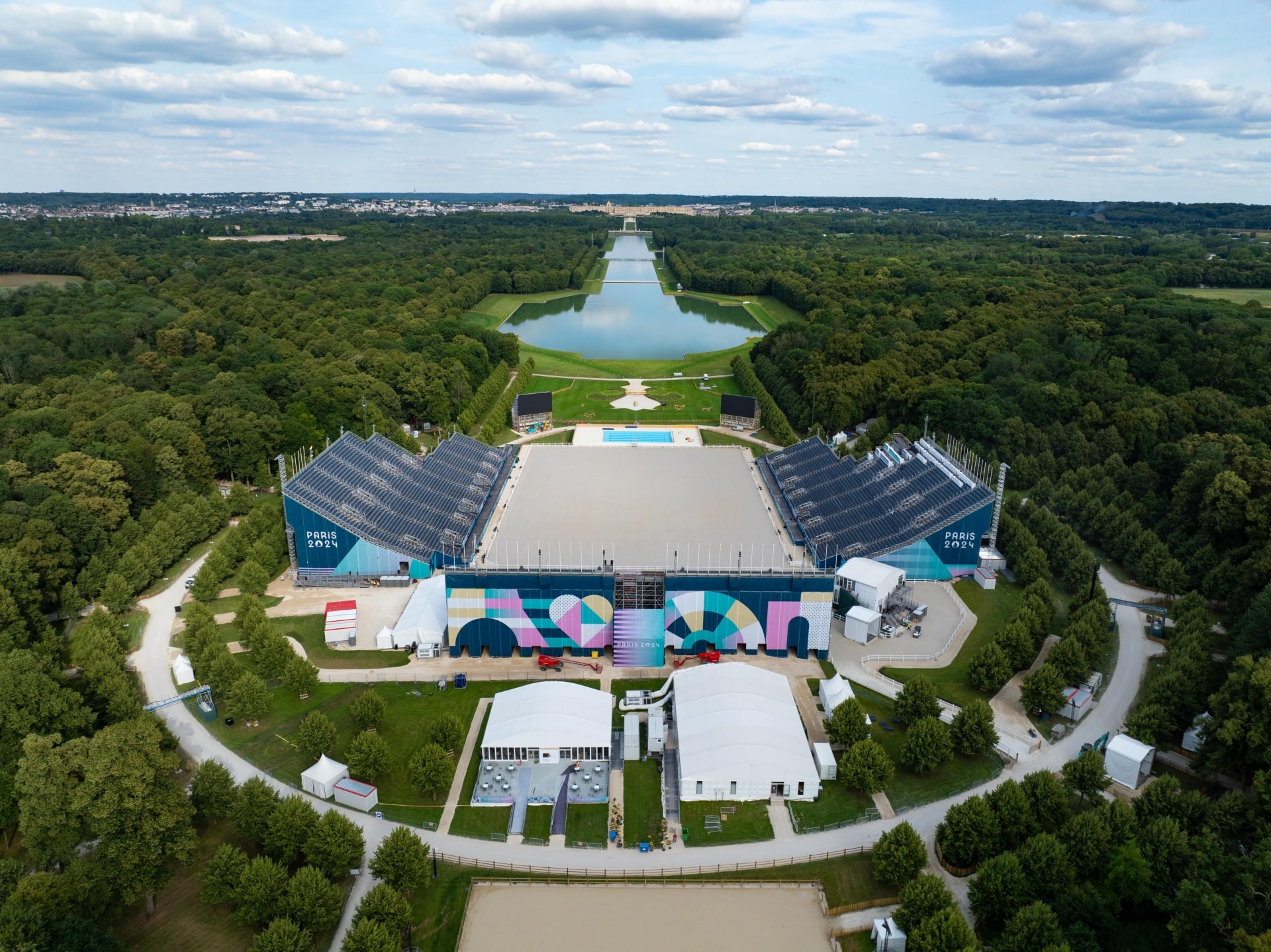
Cross-country course
A look back at the events

© Château de Versailles / Didier Saulnier
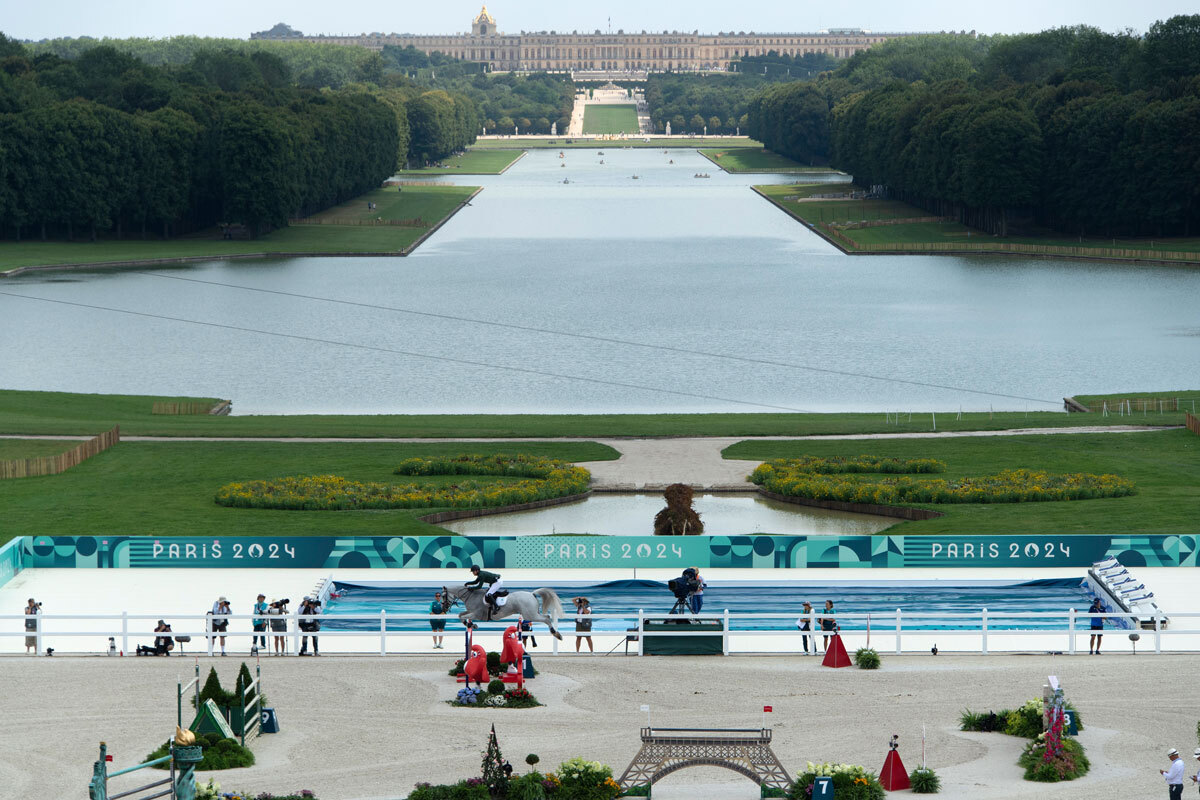
© Château de Versailles / Didier Saulnier
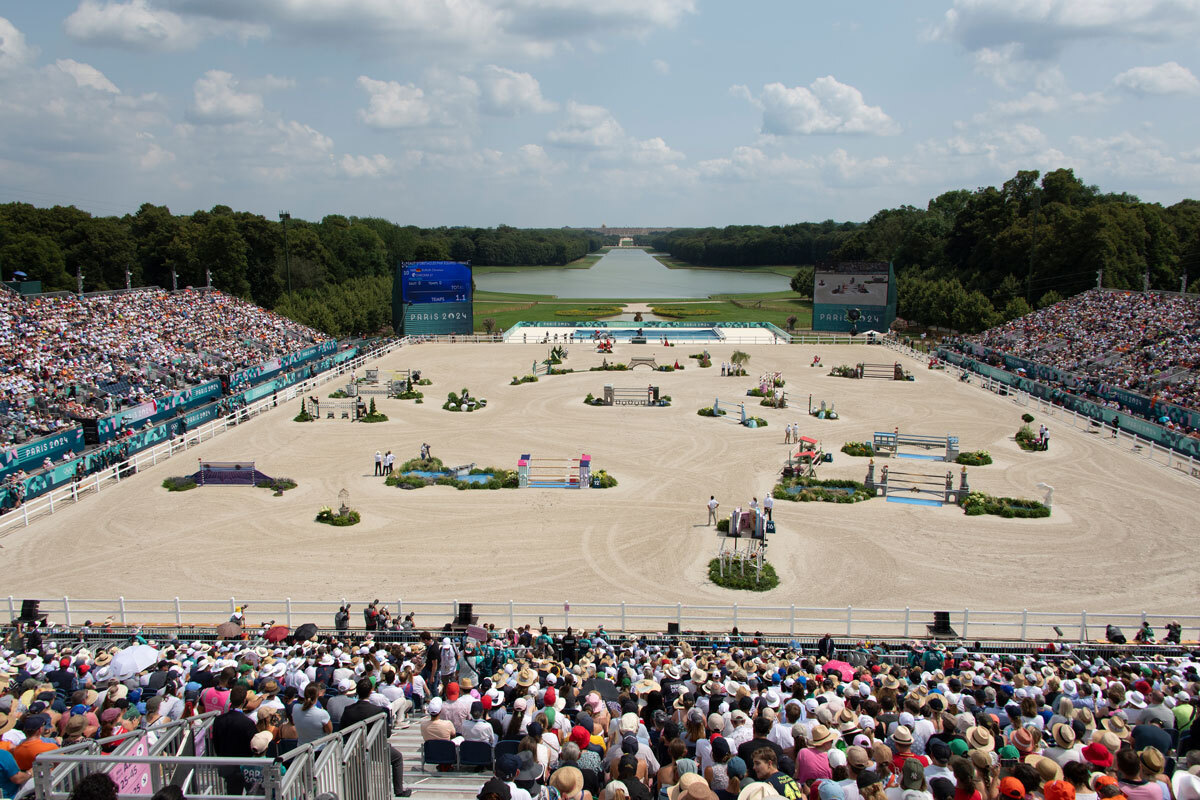
© Château de Versailles / Didier Saulnier
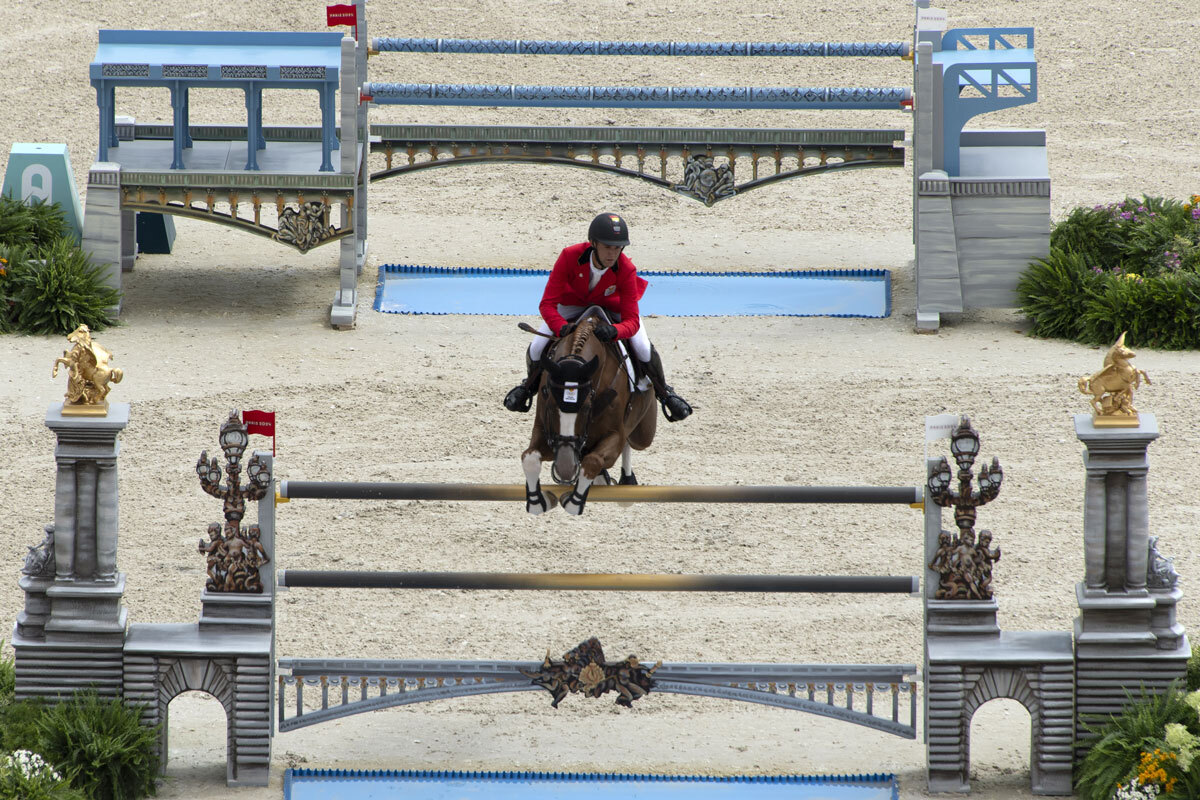
© Château de Versailles / Didier Saulnier
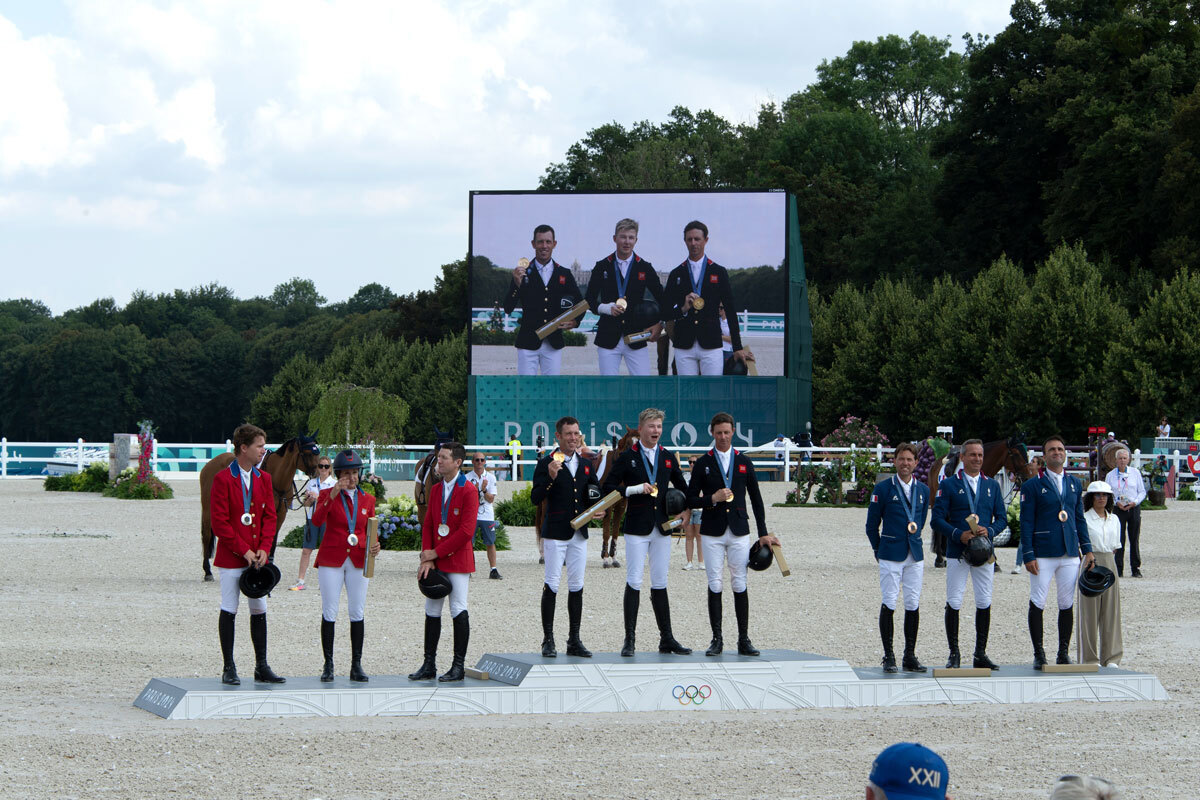
Great Britain wins gold in Jumping by team, USA wins silver and French trio wins bronze
© Château de Versailles / Didier Saulnier
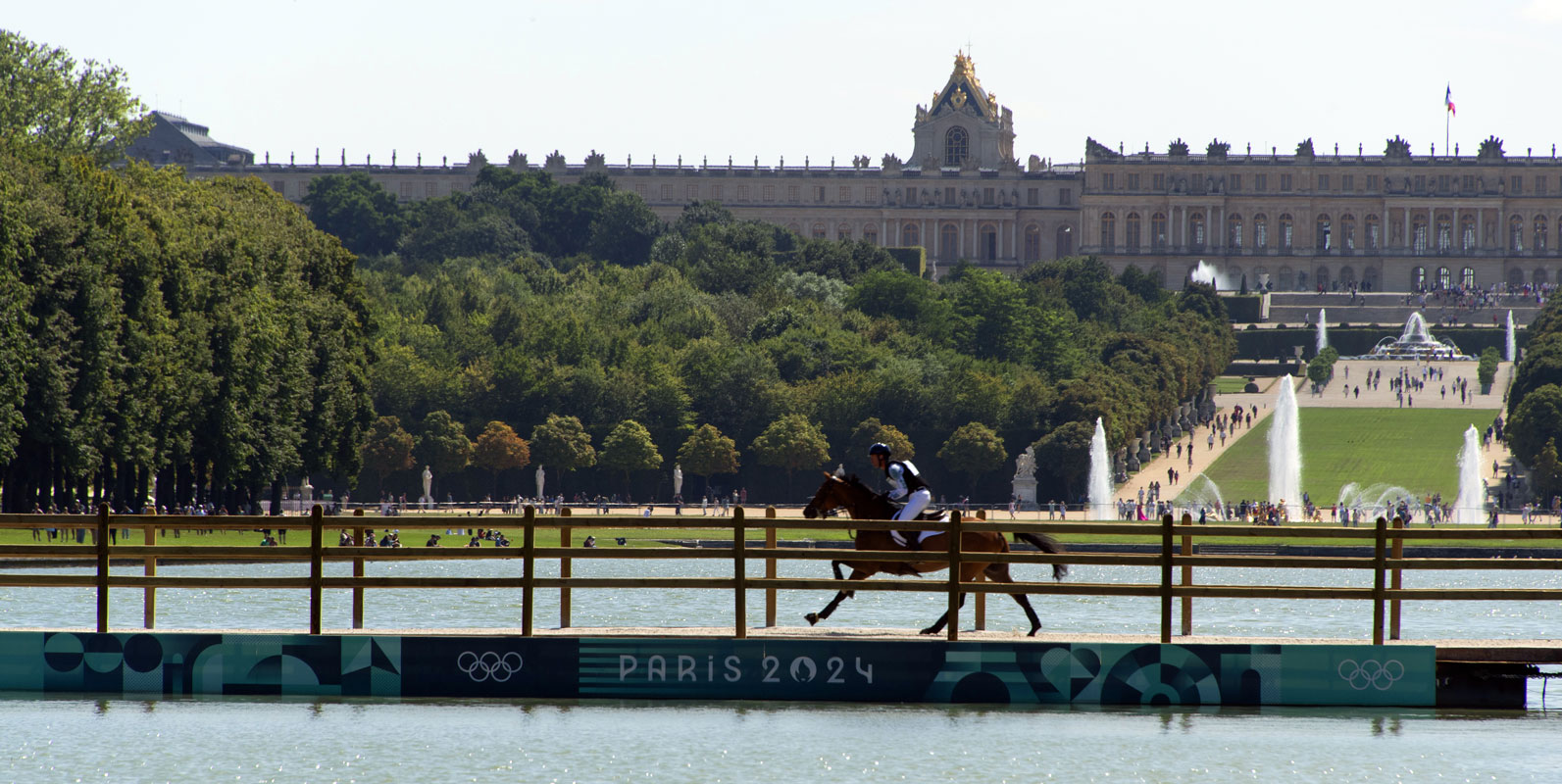
© Château de Versailles / Didier Saulnier
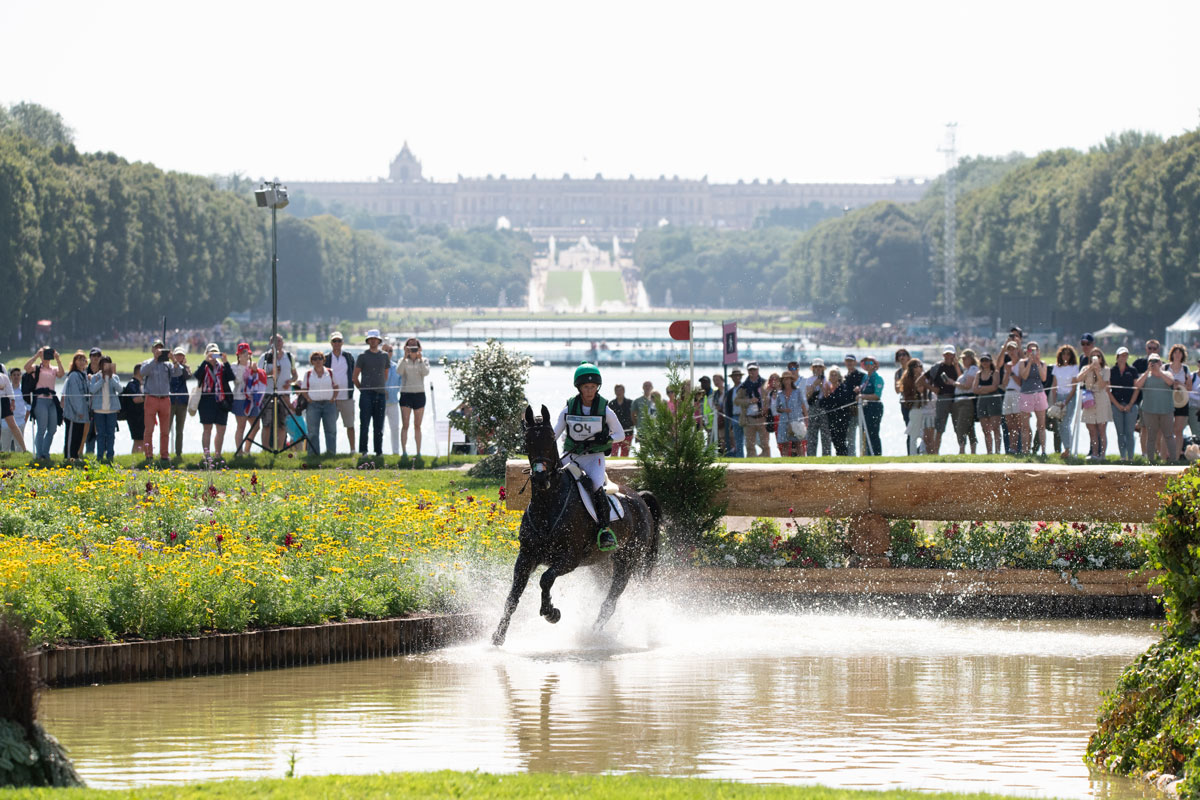
© Château de Versailles / Thomas Garnier
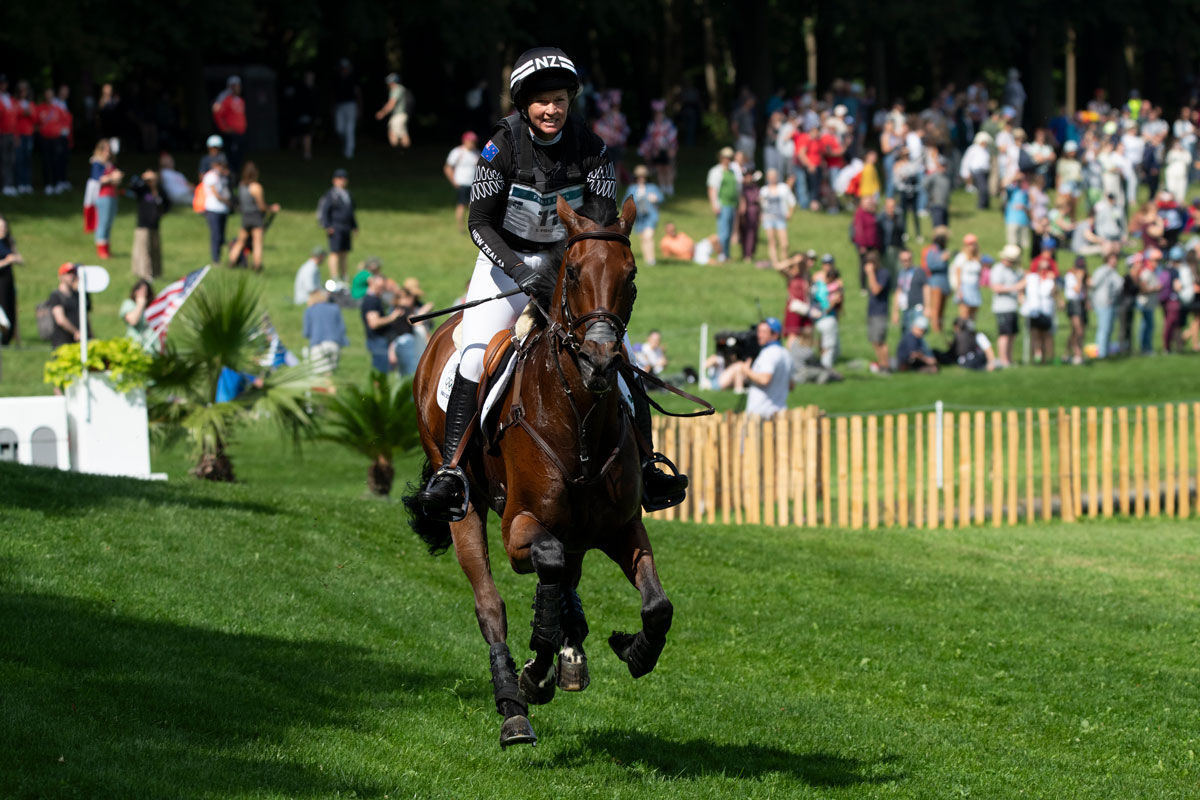
© Château de Versailles / Thomas Garnier

© Château de Versailles / Thomas Garnier
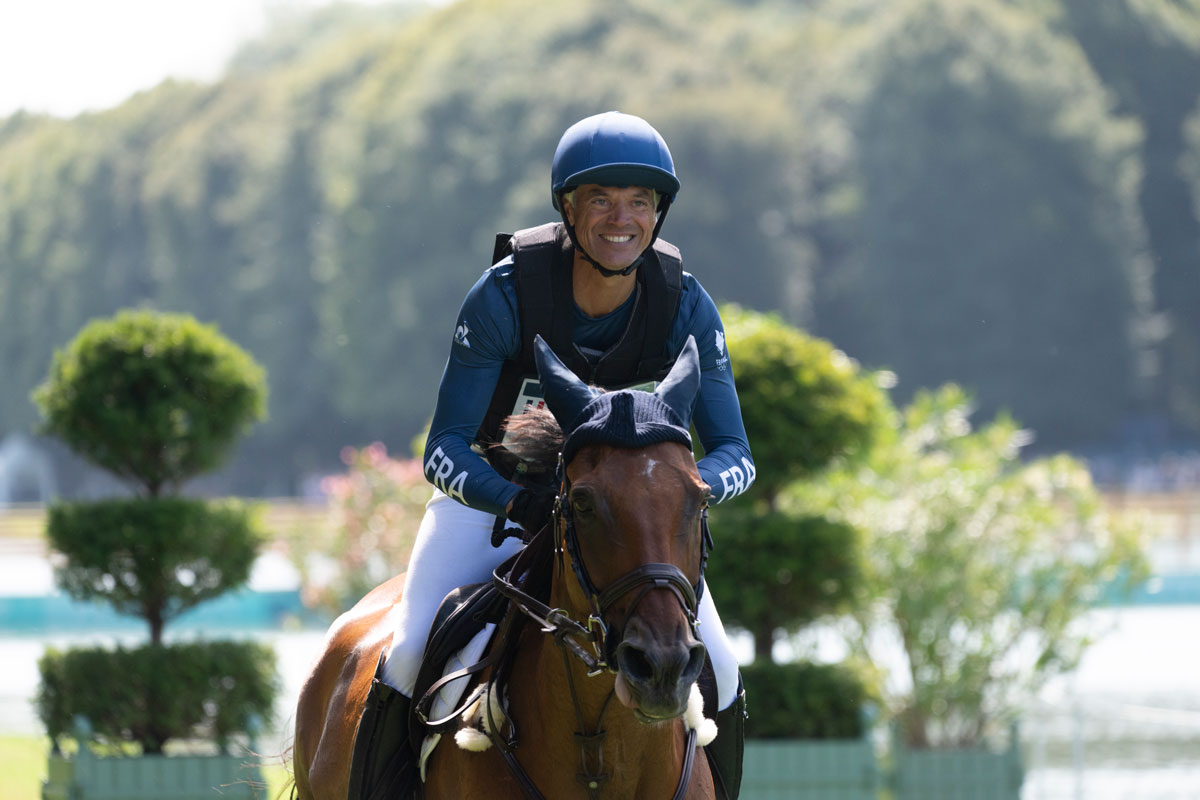
© Château de Versailles / Thomas Garnier
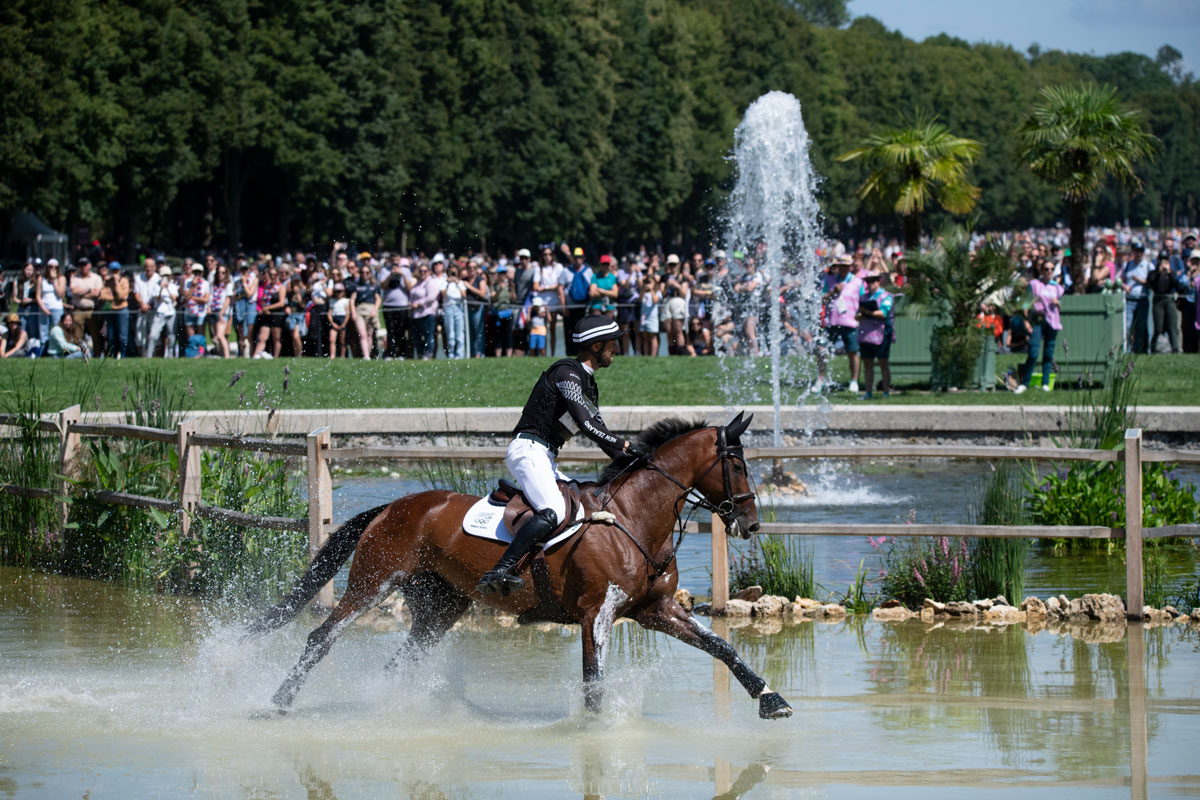
© Château de Versailles / Thomas Garnier
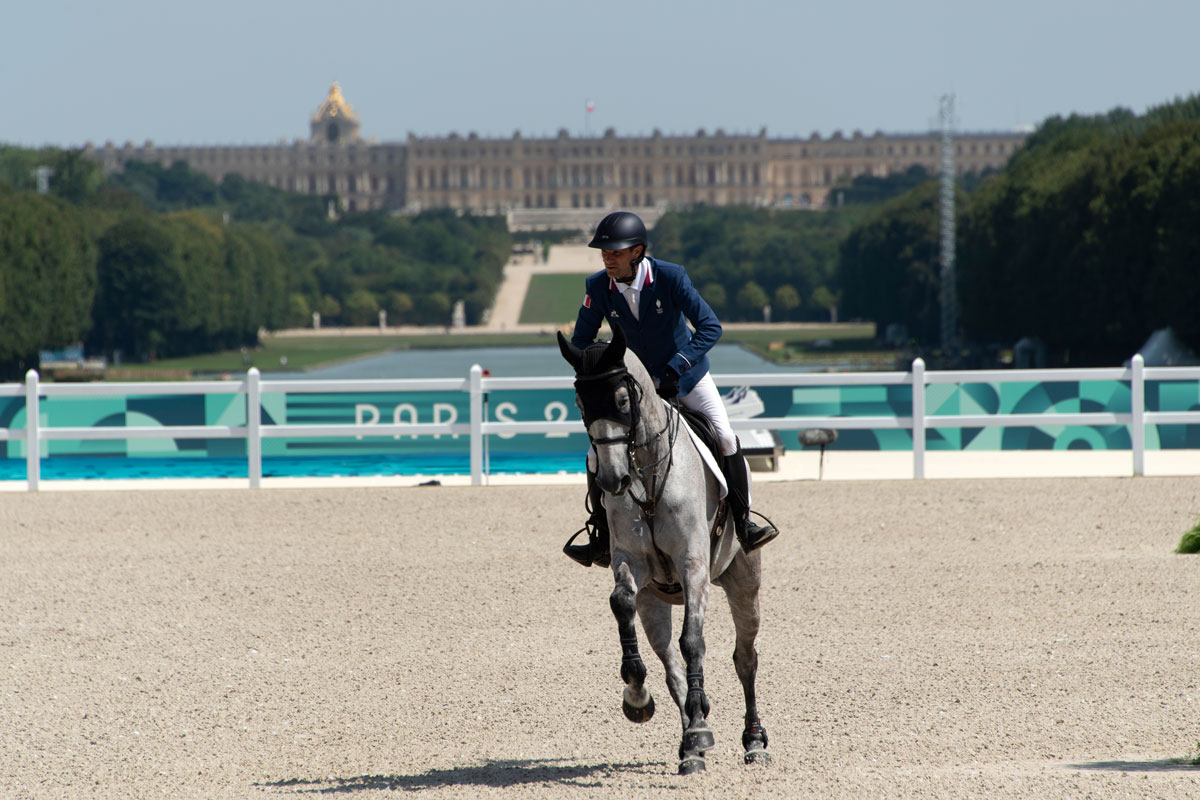
© Château de Versailles / Didier Saulnier
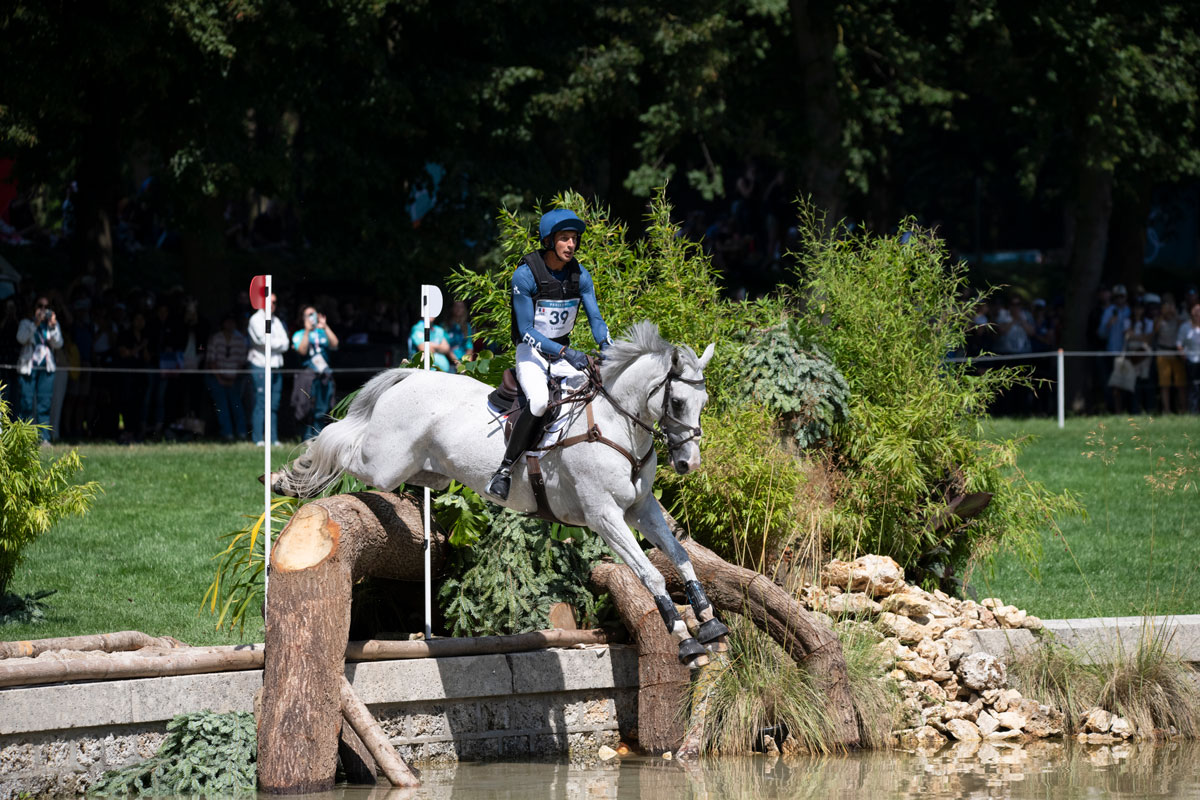
© Château de Versailles / Thomas Garnier
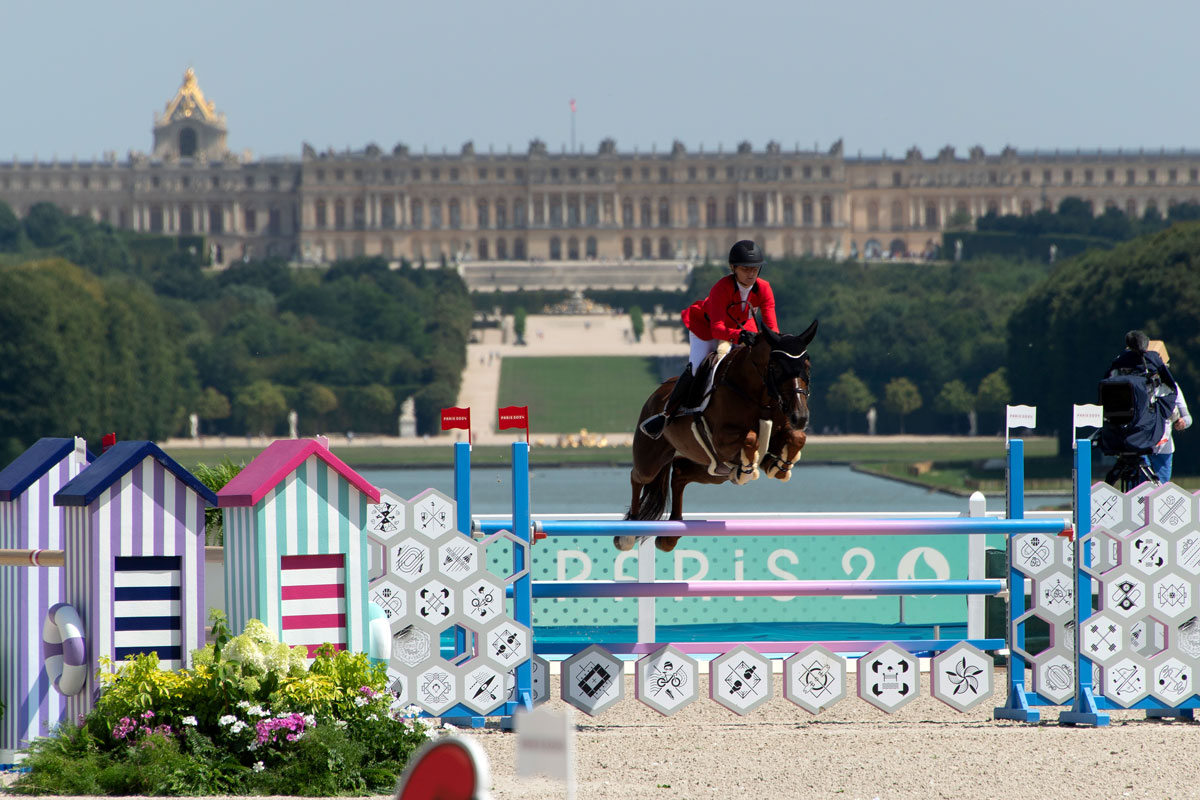
© Château de Versailles / Didier Saulnier

© Château de Versailles / Didier Saulnier
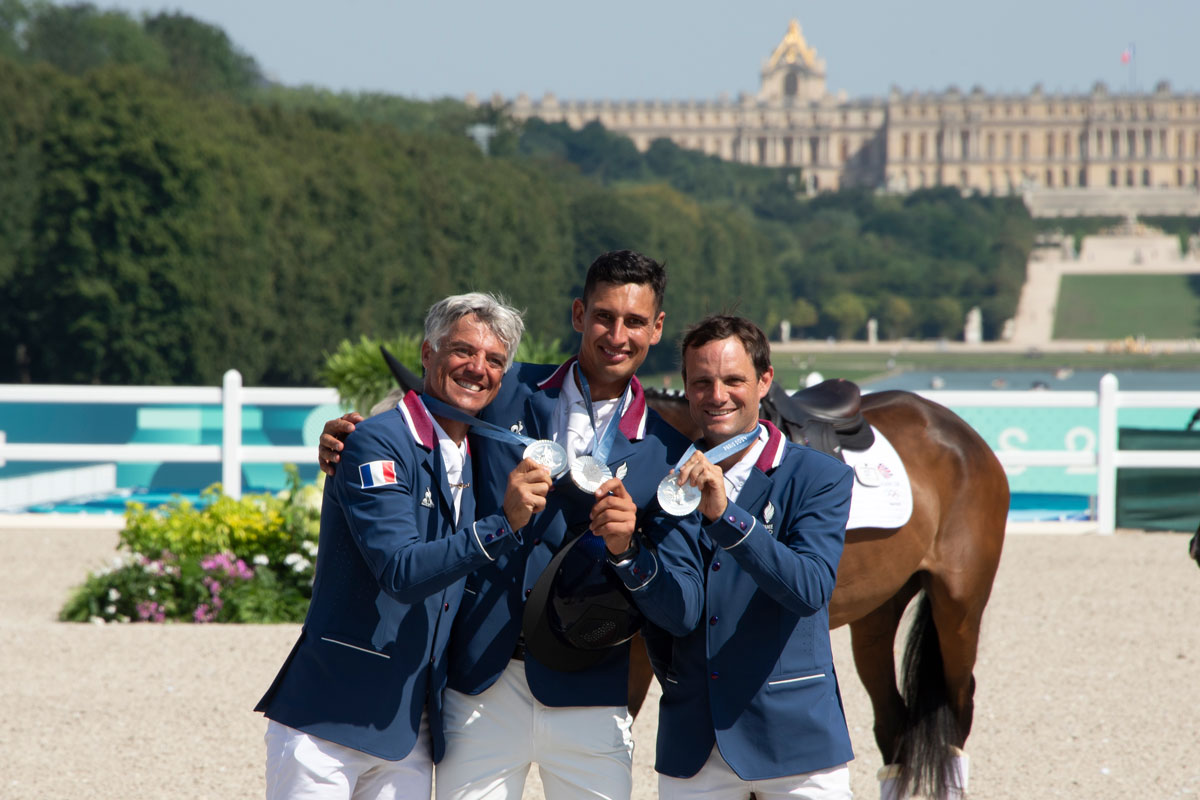
The French team of Karim Laghouag and Triton Fontaine, Stéphane Landois and Chaman Dumontceau ride for Thaïs, Nicolas Touzaint and Diabolo Menthe, wins the silver medal in the eventing
© Château de Versailles / Didier Saulnier
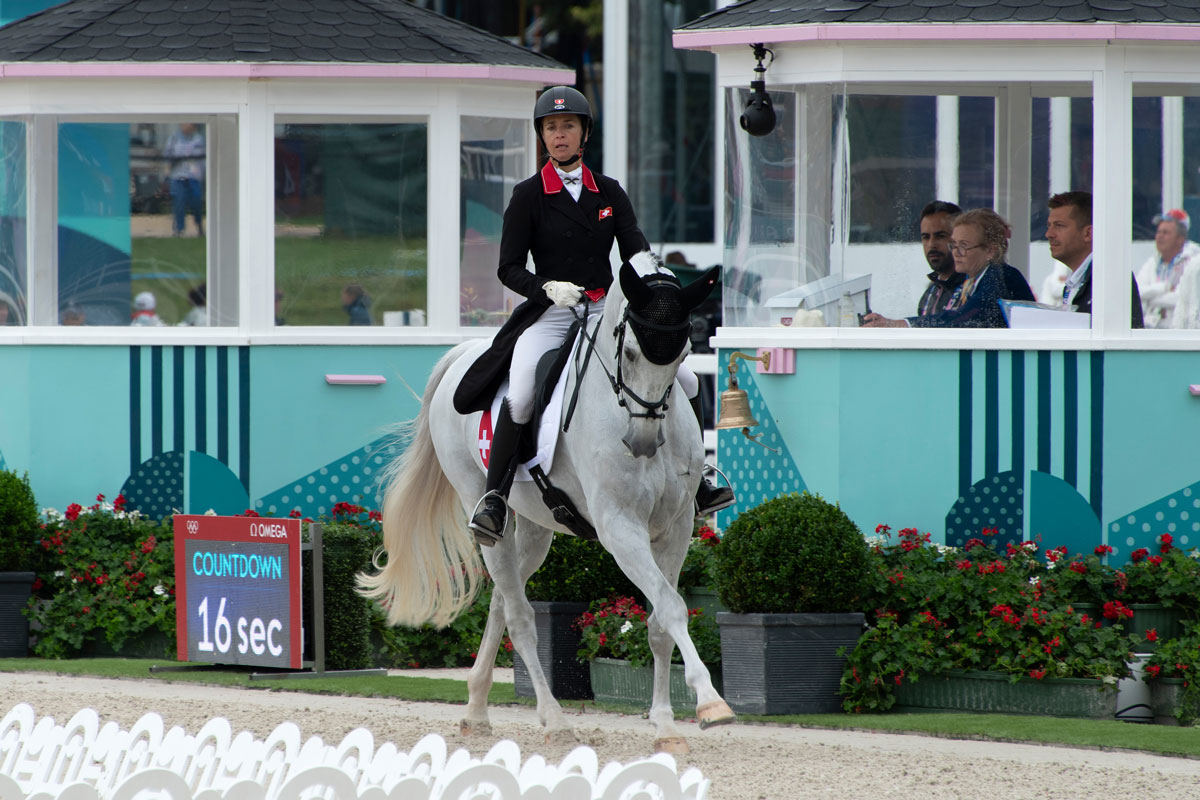
© Château de Versailles / Didier Saulnier

© Château de Versailles / Didier Saulnier
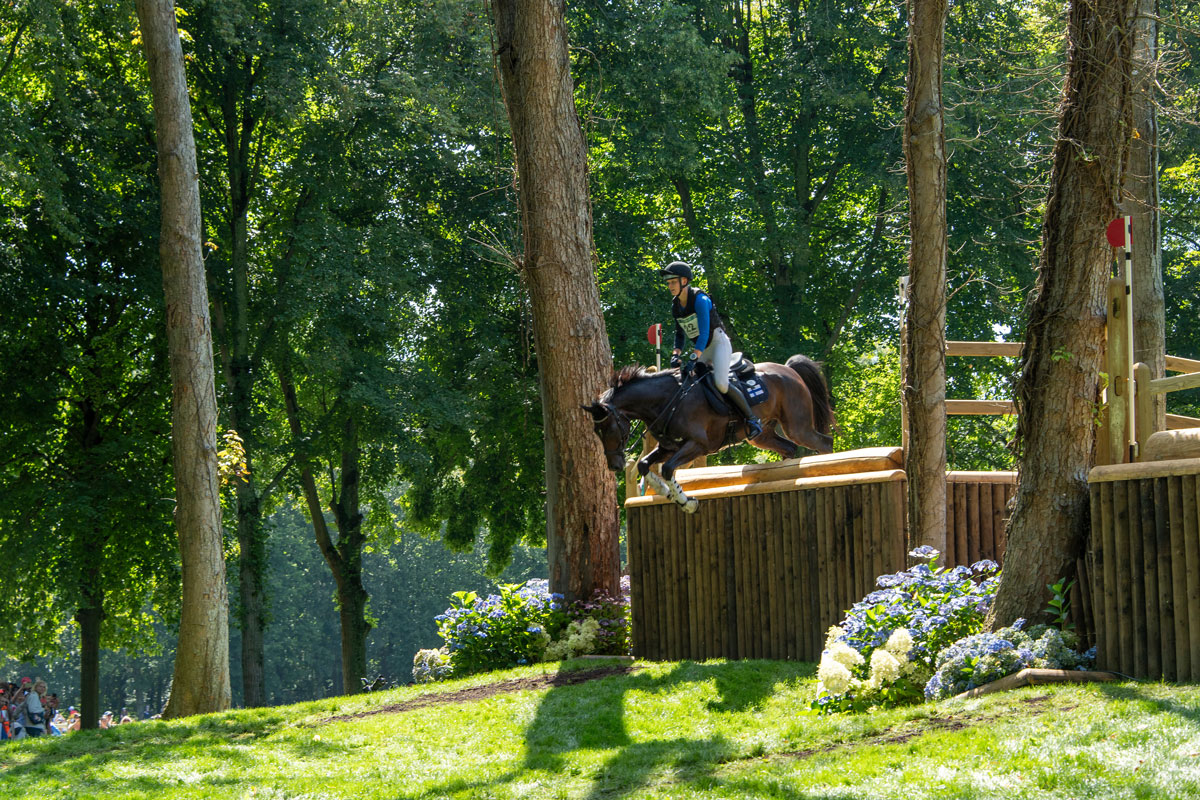
© Château de Versailles / Didier Saulnier
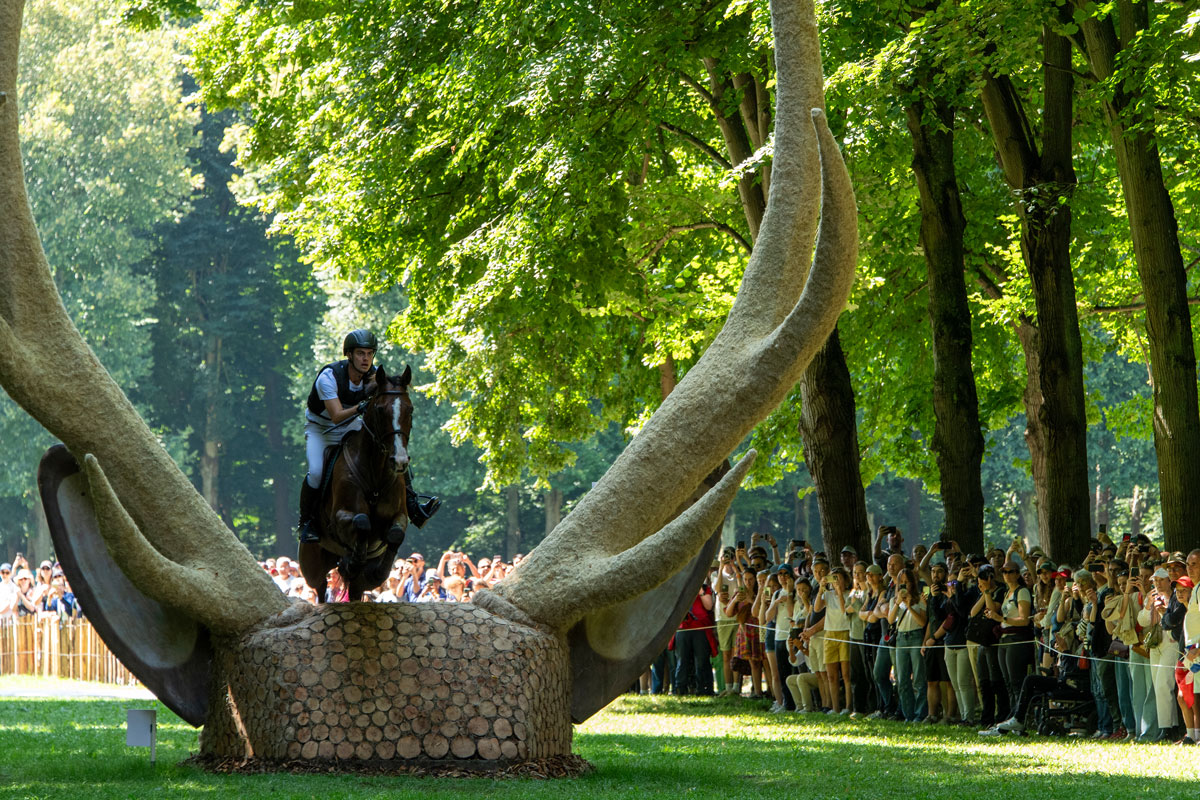
© Château de Versailles / Didier Saulnier
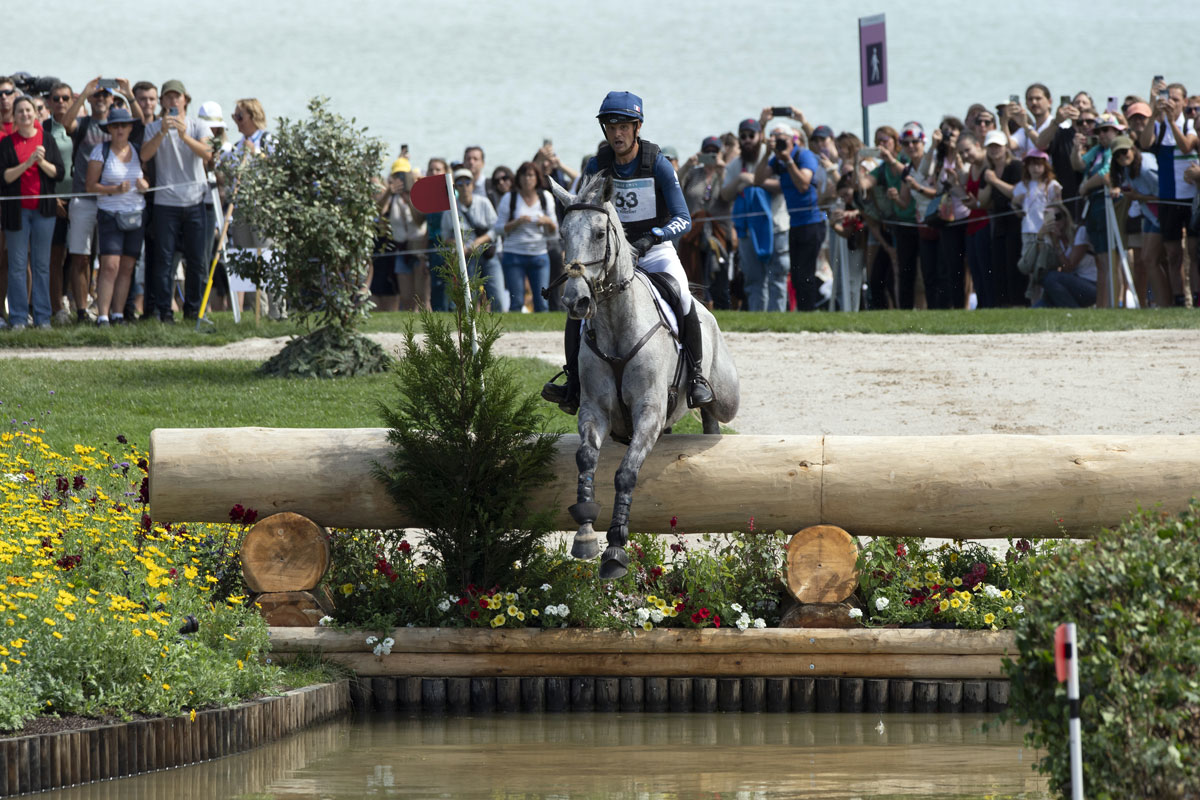
© Château de Versailles / Didier Saulnier
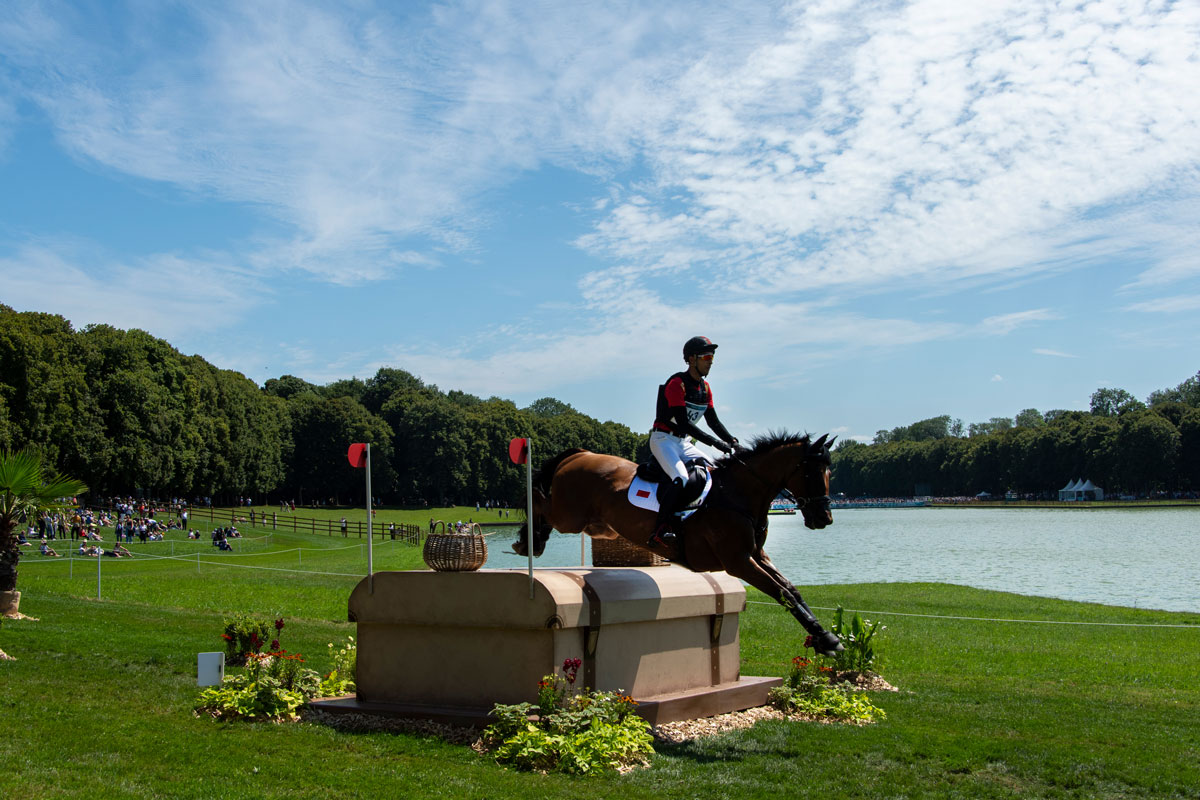
© Château de Versailles / Didier Saulnier
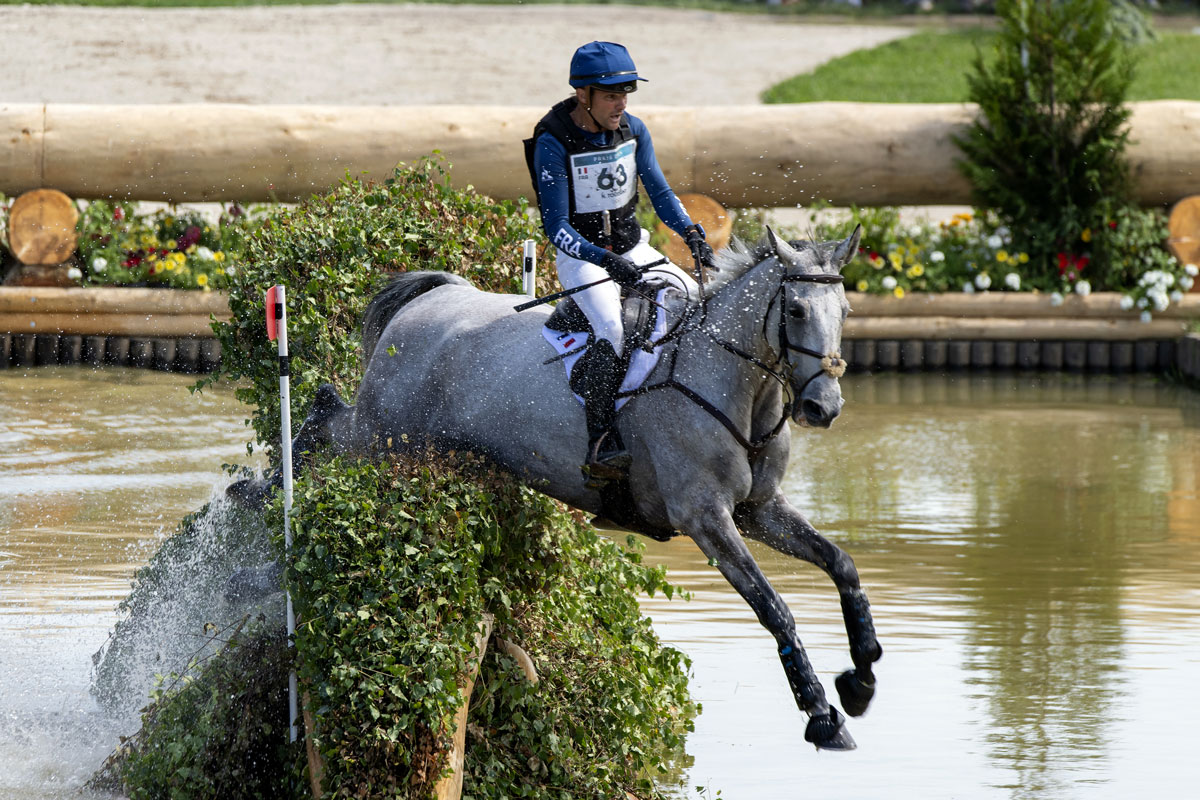
© Château de Versailles / Didier Saulnier
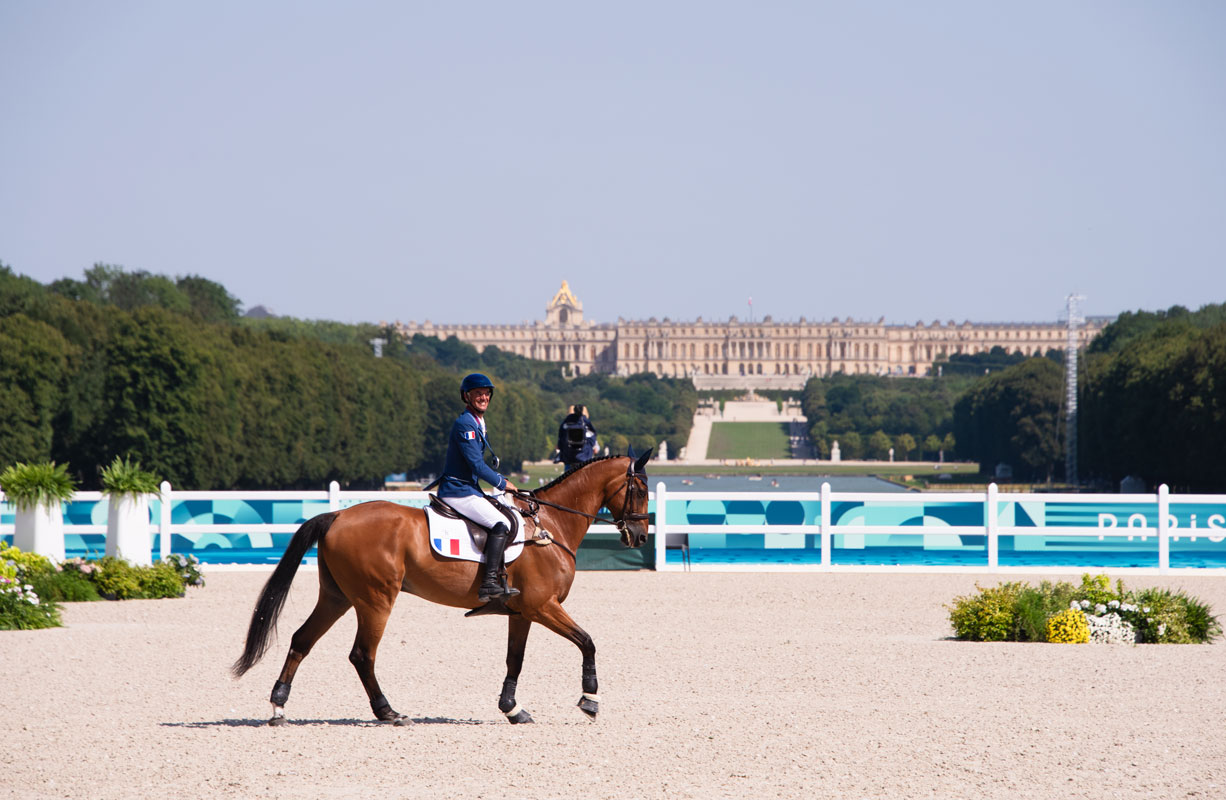
© Château de Versailles / Mathilde Riolet
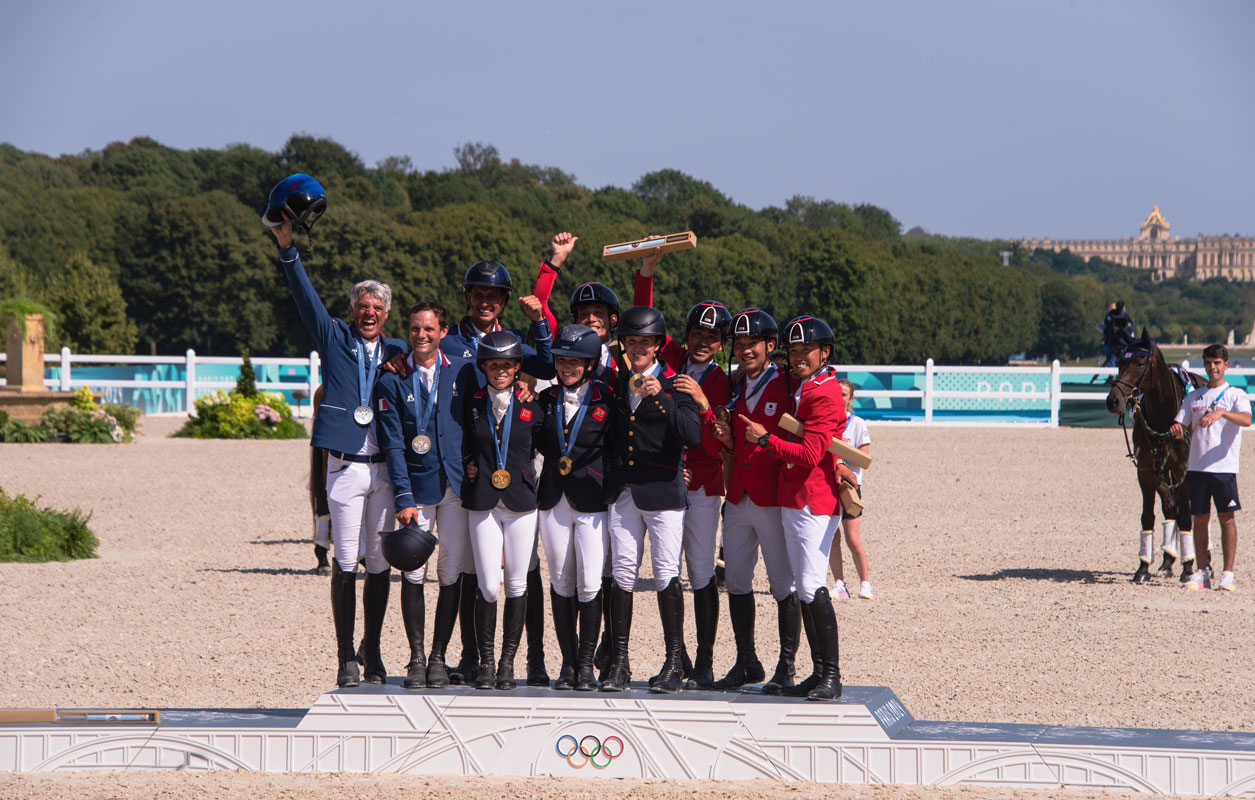
Great Britain wins gold medal and Japan bronze medal in team eventing
© Château de Versailles / Mathilde Riolet
An exhibition devoted to horses
To coincide with the equestrian events at the Paris 2024 Olympic Games, the Palace of Versailles is staging the exhibition "Horse in Majesty at the Heart of a Civilisation” from 2 July to 3 November 2024. This is the first exhibition of this scale to be devoted to this theme.
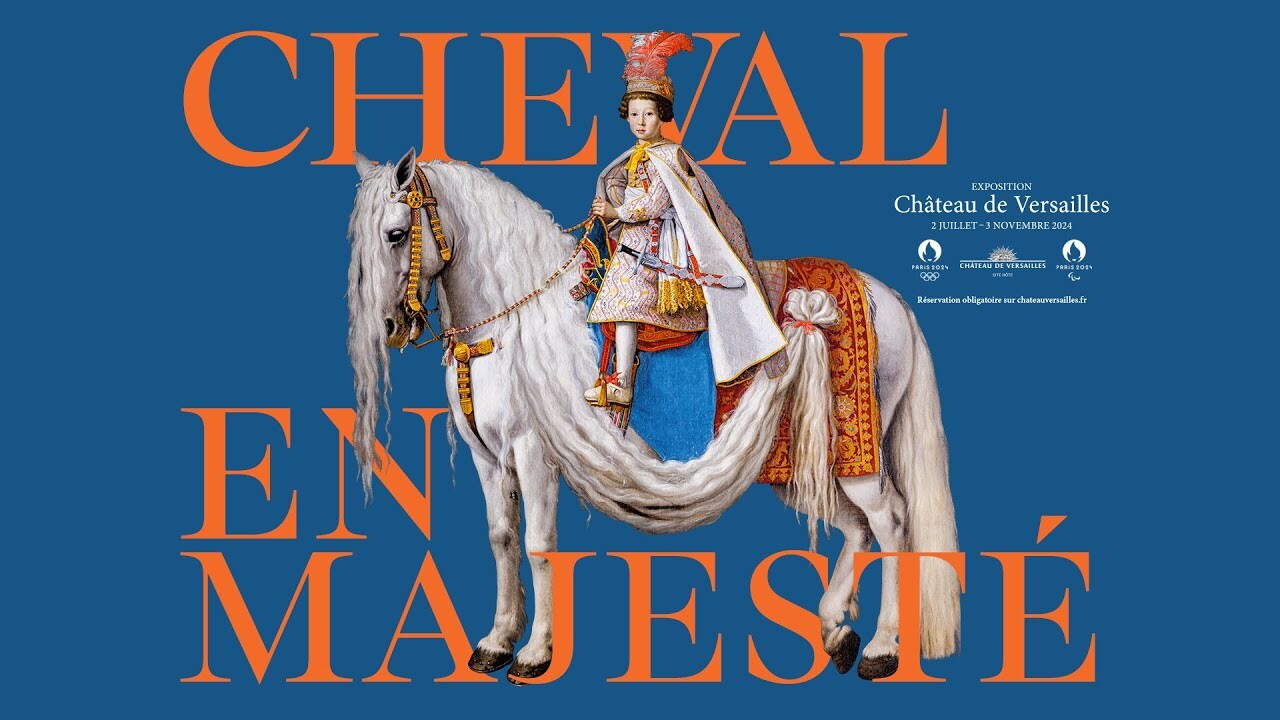
Almost 300 works, displayed in several iconic spaces in the Palace, showcase the place and use of horses in civilian and military society from the 16th to the 20th century, right up to the eve of World War I, which marked the demise of horses as a means of locomotion and their relegation to the sphere of leisure.
Picture credits
Illustrations: © Quibe
Photographs of works: © Château de Versailles (Dist. RMN) / © Jean-Marc Manaï / © Franck Raux / © Gérard Blot / © Christophe Fouin / © Thomas Garnier
Drone: © Château de Versailles / Thomas Garnier

